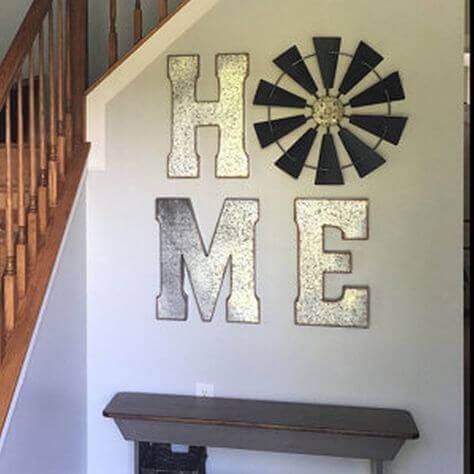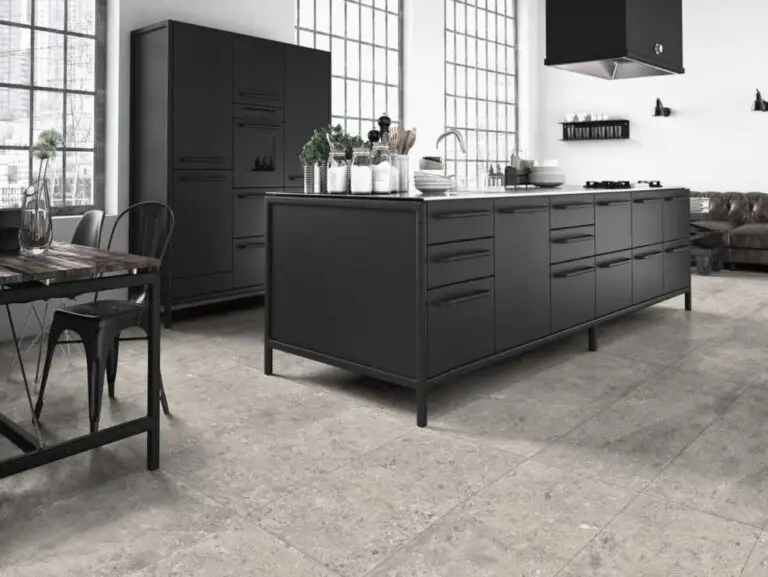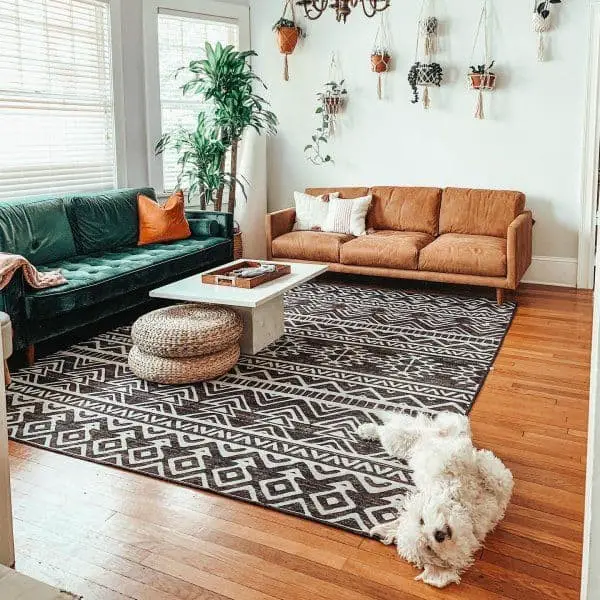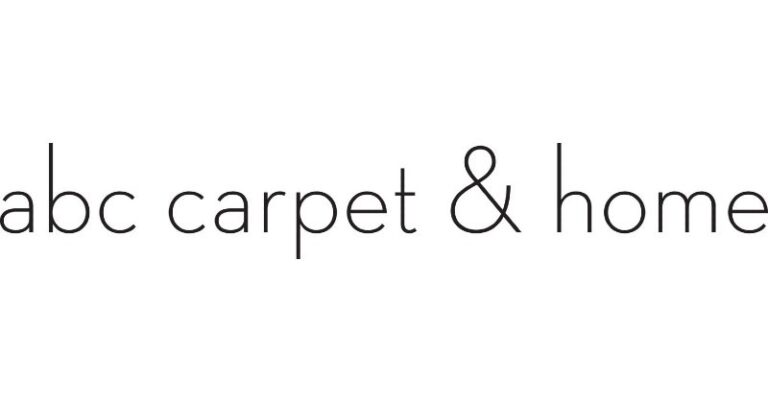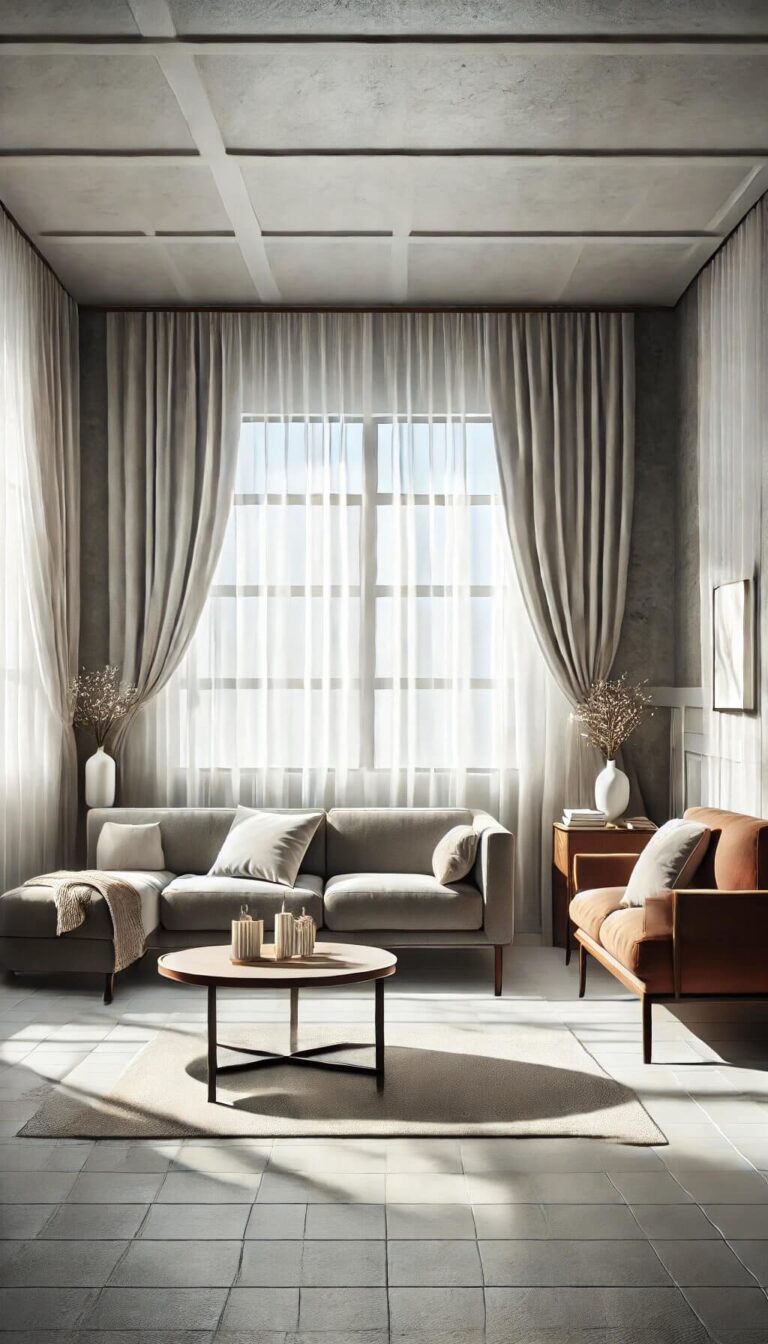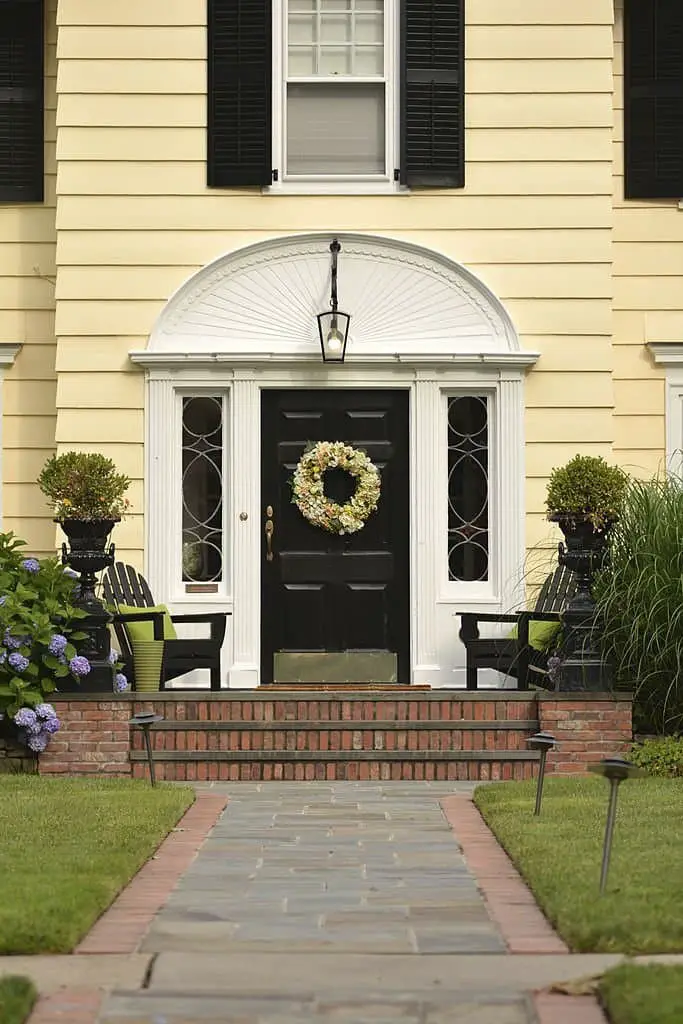35+ Best Deck Color Ideas And Designs (With Pictures)
When it comes to renovating your backyard, choosing the right deck color can be a crucial decision. A deck may be the focal point of your outdoor space, so selecting a color that complements its surroundings and reflects your personal style is essential. Perhaps you’re looking to refresh the original color of your deck, which has faded over time, or maybe you simply want to give your outdoor area a new look by painting your deck a fresh color.
Whatever your motivation, it’s worth exploring different deck color ideas to find the perfect hue for your space.
With so many options available, from classic and timeless to bold and modern, selecting the right deck color can be overwhelming. That’s why we’ve curated 35 of the best deck color ideas and designs to help inspire your decision. From warm wood tones to vibrant reds and oranges, our list includes a wide range of colors and styles that are sure to spark some creativity.
Whether you’re looking for a classic combination of warm wood and trimmed dark boards or something more modern like a deck in charcoal gray, we’ve got you covered. Take a look at our selection below and get ready to transform your backyard into the ultimate outdoor oasis.
35 Best Deck Color Ideas and Designs
A classic combination of Warm Wood and Trimmed Dark Boards.
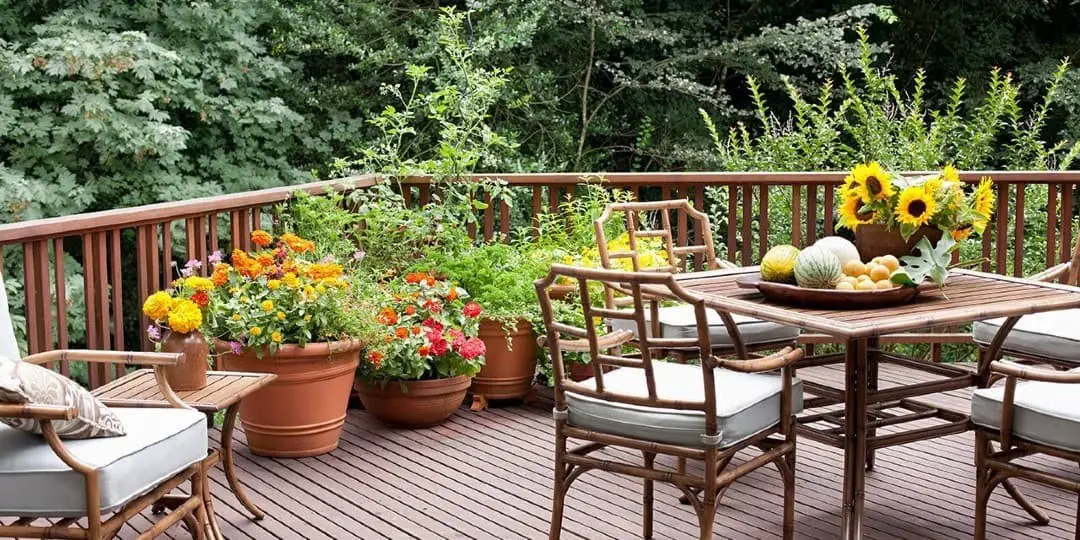
Elevate your classic home with warm wood tones infused with amber undertones. This design takes on new significance when applied to wood deck color ideas. The key to success lies in the subtle yet impactful decision to create visual interest by making the deck’s edge and trim boards a shade darker than the surrounding deck. This thoughtful approach not only adds depth but also enables you to accentuate stairs, creating a false area rug look that further enhances the overall aesthetic.
Deck Boards in a Variety of Wood Looks
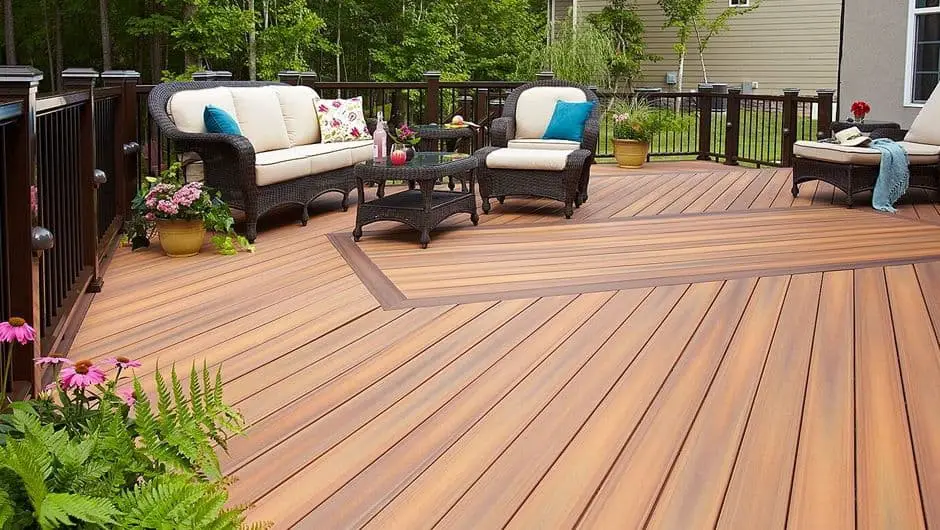
The composite decking material boasts a unique blend of colors, mimicking the natural appearance of wood. The boards are available in a range of tones, from rich, warm browns to vibrant oranges. The varied hues create a natural look that’s enhanced by the subtle texture and depth added to each board. This visual appeal is further emphasized when paired with contrasting elements, such as the crisp white fence that provides a stylish counterpoint to the deck’s earthy tones.
Wood Toned Boards in Taupe and Red
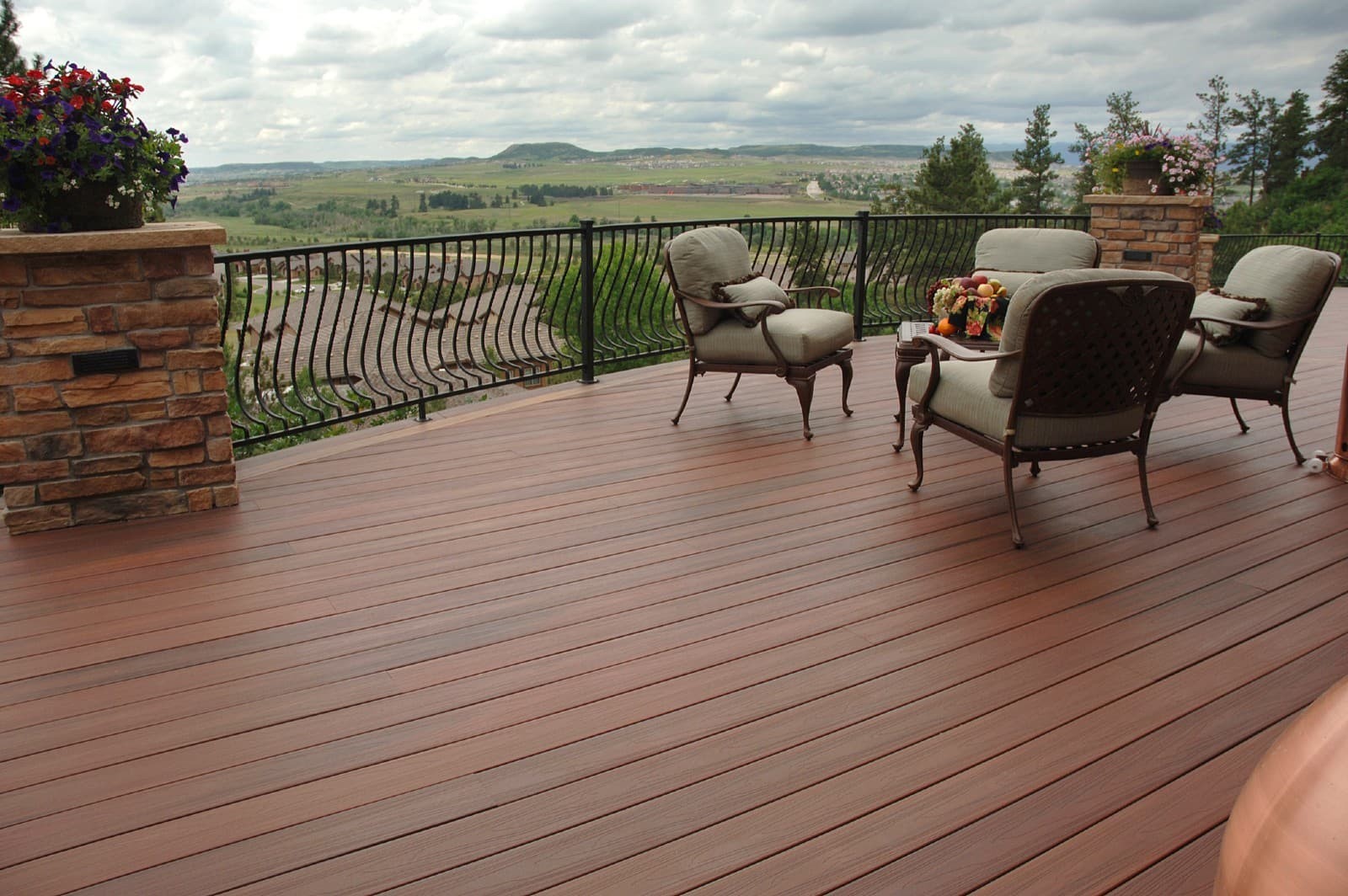
This deck’s color palette seamlessly blends with its tan house backdrop, making it an excellent choice for those seeking a harmonious exterior appearance. The taupe-colored rock’s subtle undertones of brown and gray enable it to adapt to the surrounding environment, potentially complementing a brown-hued exterior. Meanwhile, the reddish wood railings, skirt, and hot tub introduce a touch of warmth and contrast nicely with the lighter decking and siding, creating a visually appealing space.
Deck in Vibrant Red and Orange
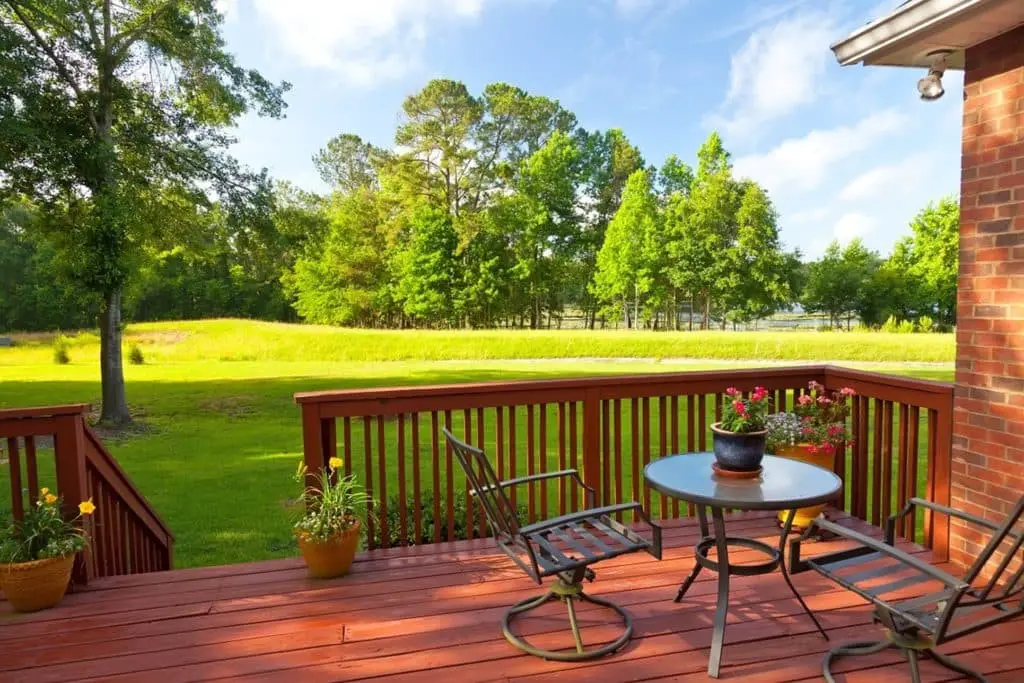
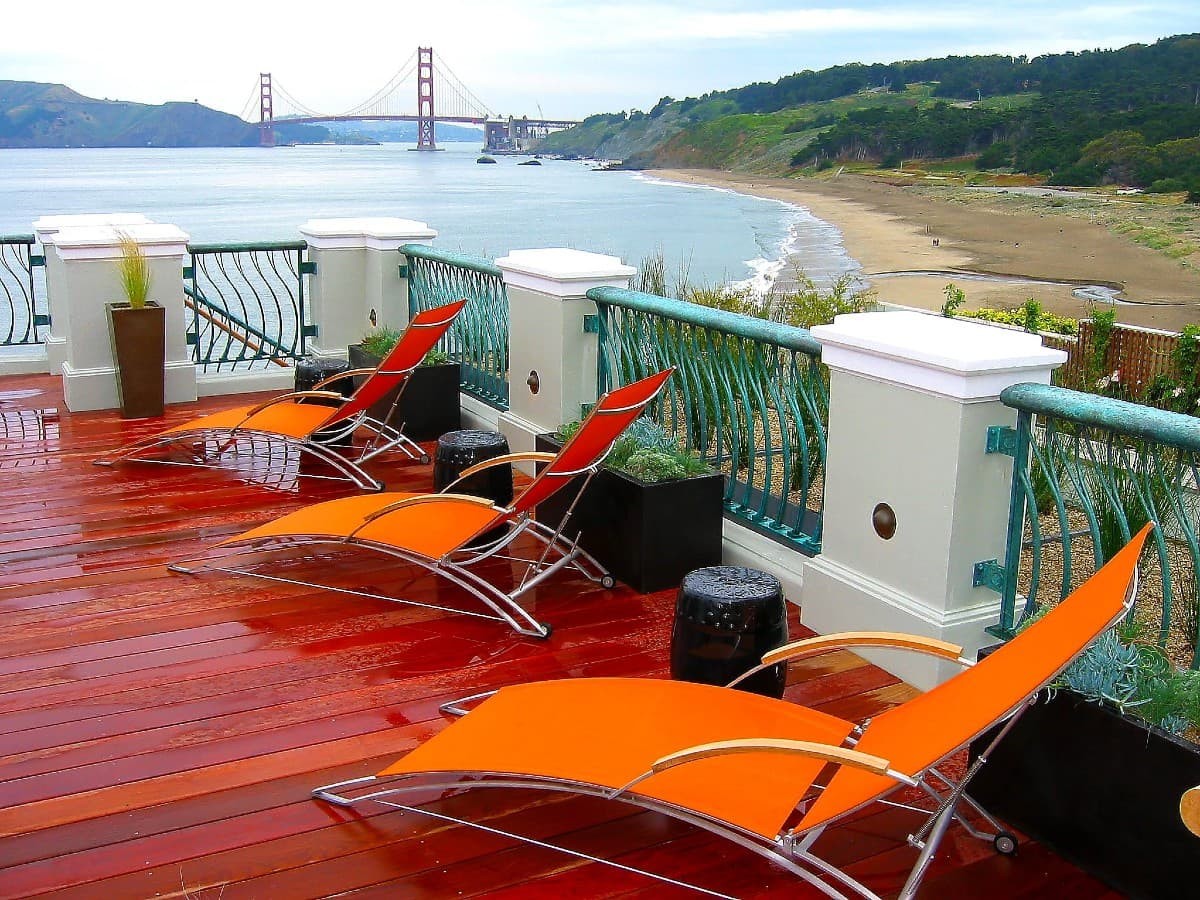
When it comes to achieving a striking effect on your deck, wood stain can be an effective tool. However, it’s only half the story. The actual result is even more impressive, with flaming red and orange hues blending seamlessly with brown tones to create a warm and inviting ambiance that’s sure to impress. For those looking for deck colors that complement tan houses, another option worth considering is one that pairs nicely with earthy shades ranging from light sand to rich dark chocolate brown.
This combination creates a visual statement without overpowering the space.
Brown Deck with a Deep, Uniform Finish
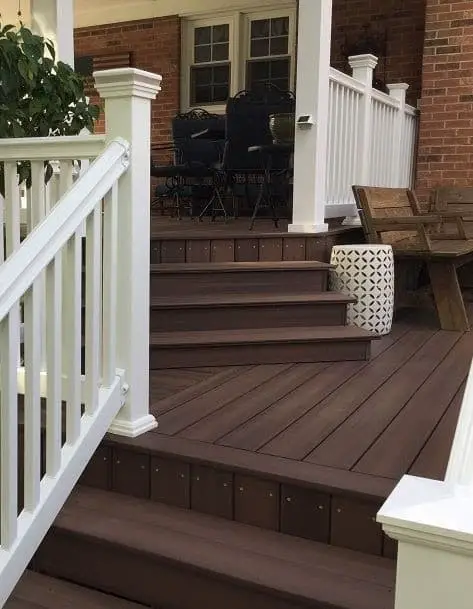
The harmonious blend of colors on your deck can greatly enhance its modern appeal. A consistent color scheme, like that achieved with the use of chocolate hues, is particularly effective in creating a sleek and contemporary design. This visual cohesion is further emphasized by the linear shape of the deck and its proximity to concrete elements.
The stark contrast between the warm, earthy tones of the wood and the cool, industrial feel of the concrete slabs adds depth and visual interest to the overall aesthetic.
Reddish Brown Deck, Organic and Flowy
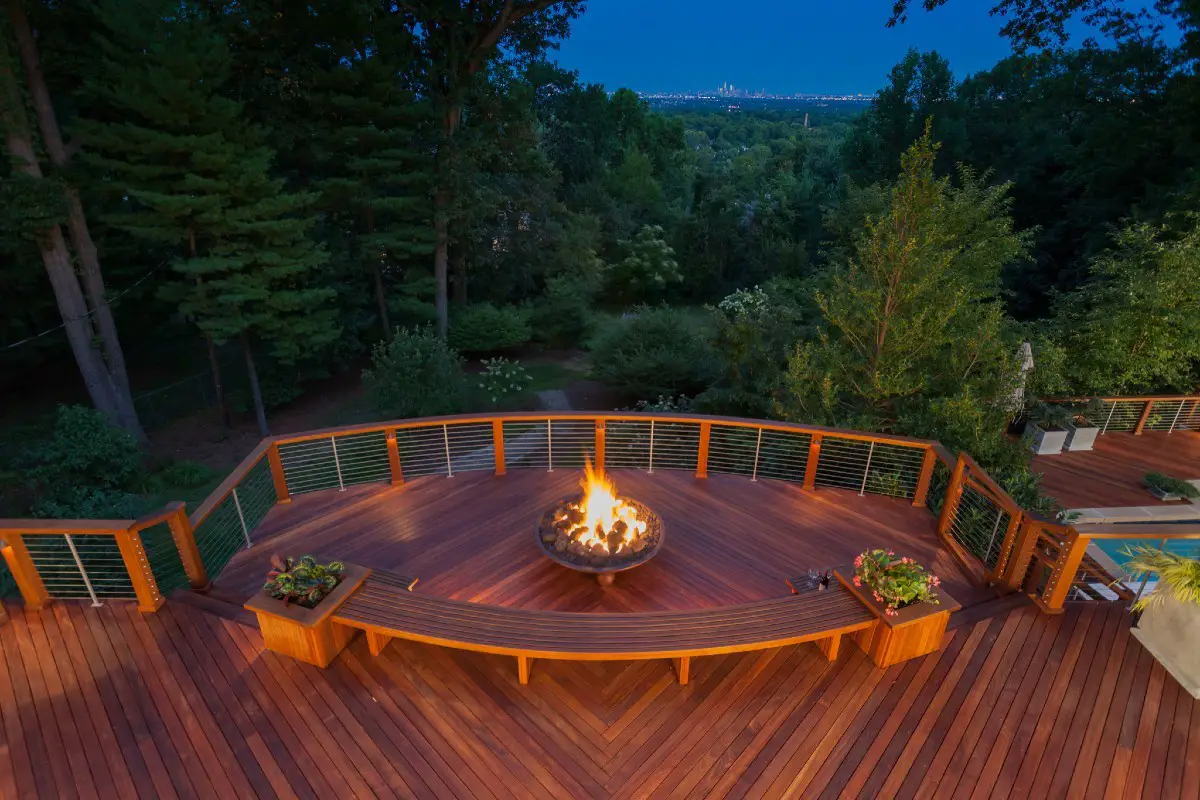
When applying a warmer tone to the surrounding plant life, it becomes more noticeable by contrast. The reddish undertones provide a striking juxtaposition to the green hues, creating visual interest through the variation in color. Furthermore, this subtle nuance adds to the overall organic feel of the design, making it an excellent choice for those who want their deck to harmonize seamlessly with its surroundings.
Cool Brown Deck with a Mid-Toned Finish
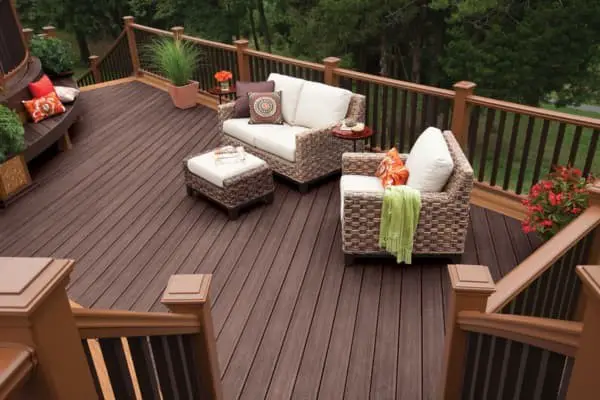
When seeking deck colors to complement a white house, consider the option of grey-toned wood. This mid-tone wood has a subtle cold undertone that creates a pleasing contrast with the structure’s crisp white trim and railings. While this aesthetic is particularly suited for white homes, it can also work harmoniously with other neutral exterior hues like tan or gray.
Wood with a Pale Color
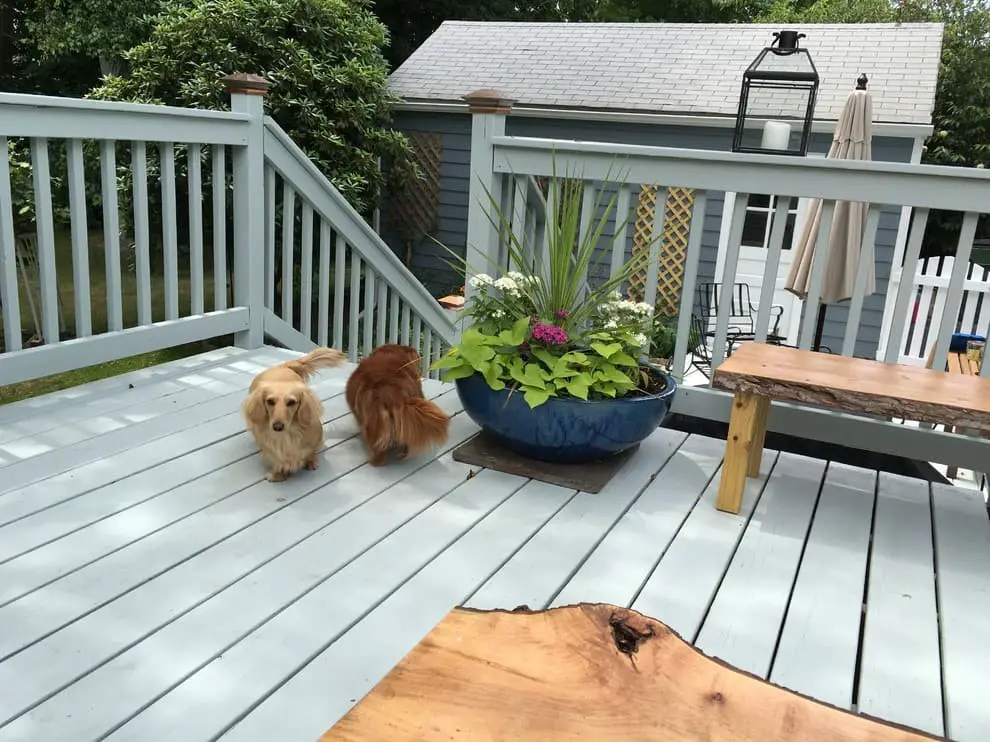
When opting for a light-colored wood deck, a beachy ambiance is easily achieved. The lighter tone creates a sense of calmness, making it an excellent choice for those seeking to evoke a coastal atmosphere. To add visual interest, incorporate boards with slightly varying hues to create borders and stripes. This subtle approach lends sophistication to the overall design. While this aesthetic works well on lighter-colored homes, it can also serve as a striking alternative for darker-hued houses.
Pairing light wood with bold colors like navy blue or forest green generates significant contrast, resulting in a contemporary look that’s sure to turn heads.
Deck with a Gentle Gray Wash
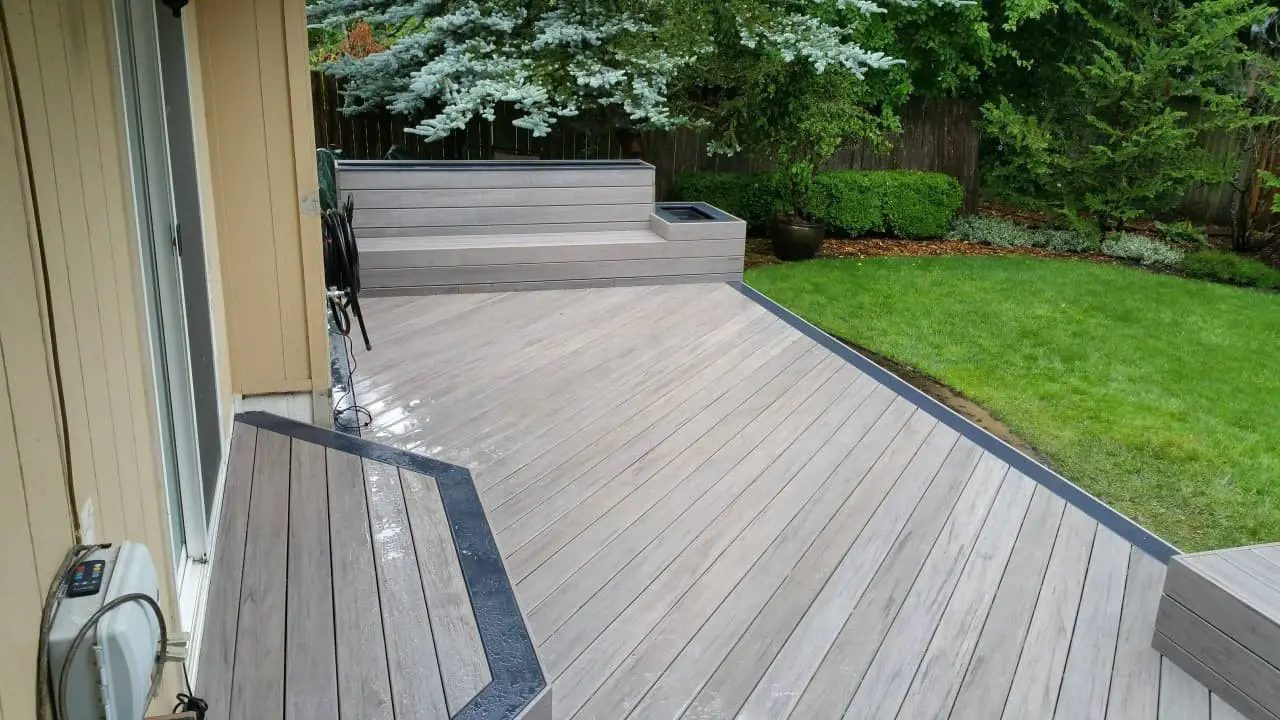
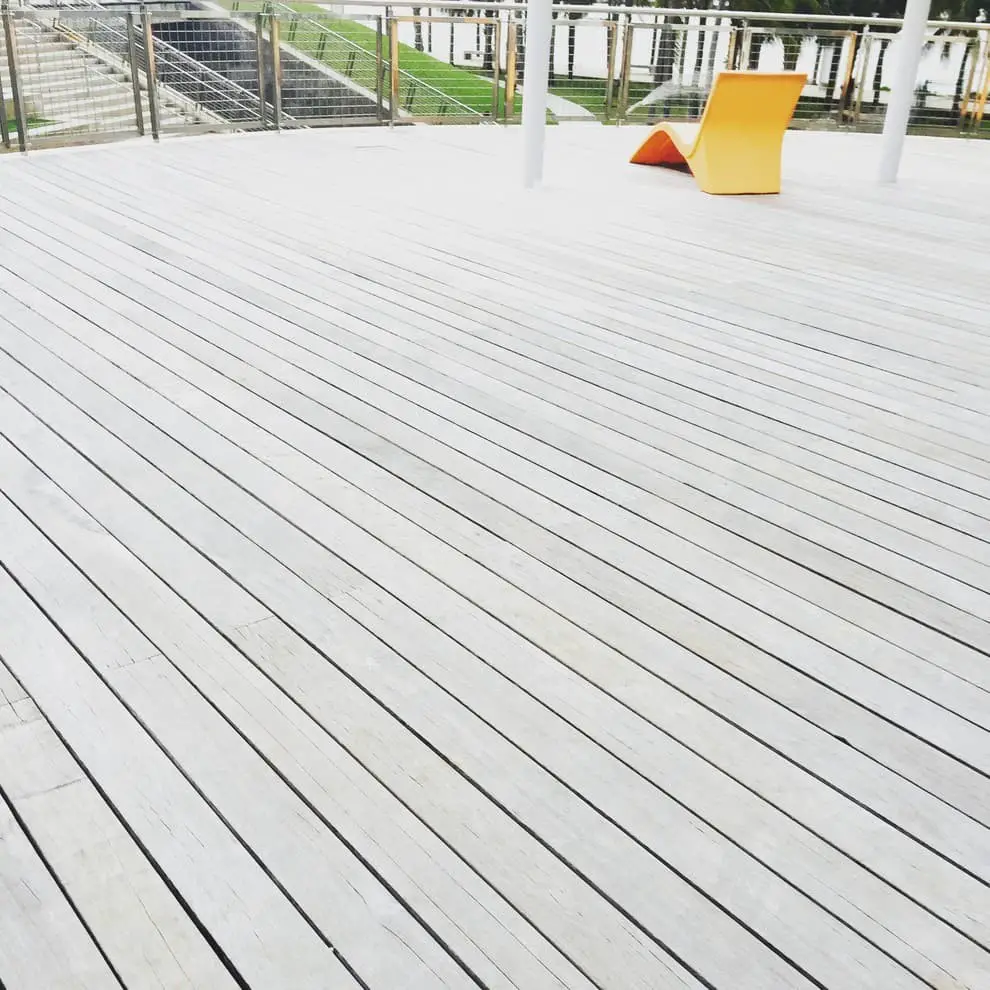
The neutral outcome is elevated by the gray wash finish, which creates a subtle contrast to the wood grain’s natural nuances. As a result, the deck’s appearance becomes lighter and more refined. The sleek lines that follow add a touch of modern sophistication, making it surprisingly compatible with historic properties as well. Ultimately, this design offers a versatile and adaptable solution that can seamlessly integrate with any color scheme or architectural style.
A modern multiple deck
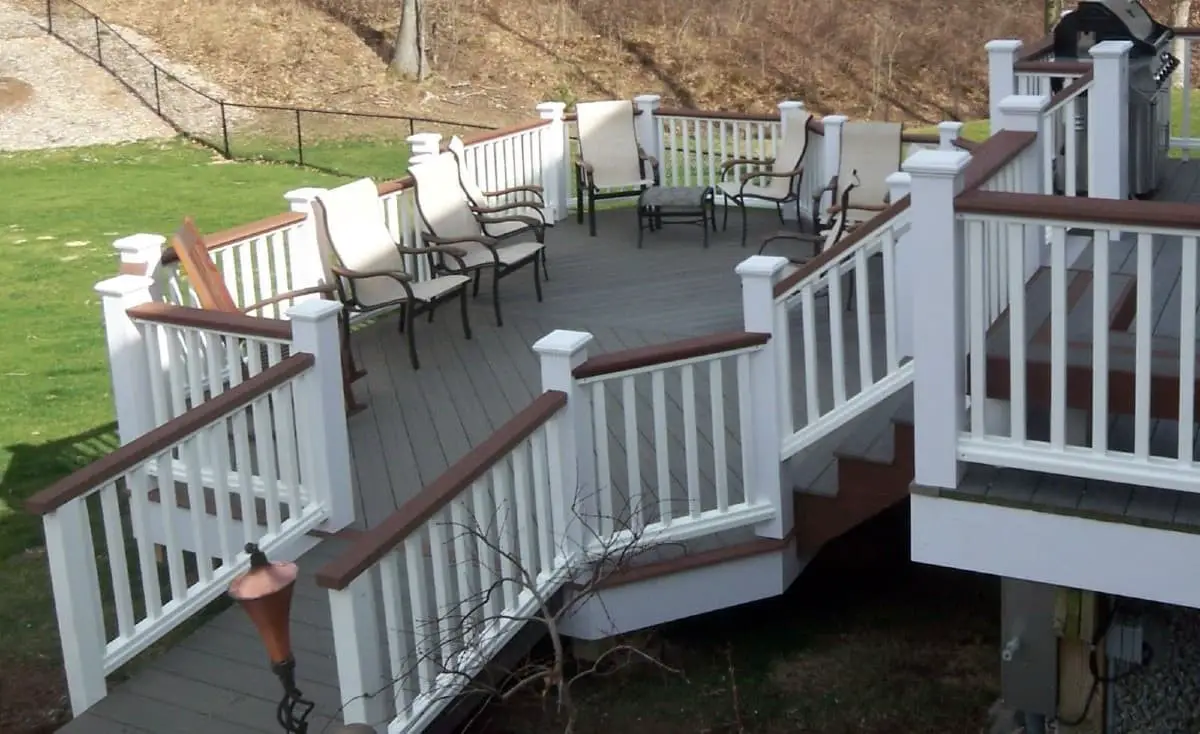
This modern wooden deck boasts a sleek appearance, characterized by a vibrant color palette and a linear layout. The horizontal privacy fencing provides an innovative approach to maintaining visual separation. Furthermore, the transparent railing at the base of the staircase offers unobstructed views without compromising the overall aesthetic.
The wood’s lighter hue has a subtle reddish-brown tone with hints of gold, making it versatile for pairing with contrasting colors such as white and dark hues like navy blue, creating a striking visual effect.
Pergola and Cedar Deck

Cedar is a top-notch material for constructing decks in humid climates, as it boasts inherent water-resistance. This allows you to enjoy your cedar deck for an extended period without worrying about the elements taking their toll. Not only does cedar have a unique warm hue with subtle golden and crimson undertones, but its natural texture also adds a charming rustic touch.
When combined with artisanal details like pillar designs and railings that nod to traditional arts and crafts or even Asian influences, a cedar deck can truly become a stunning focal point in your backyard.
Deck in Charcoal Gray
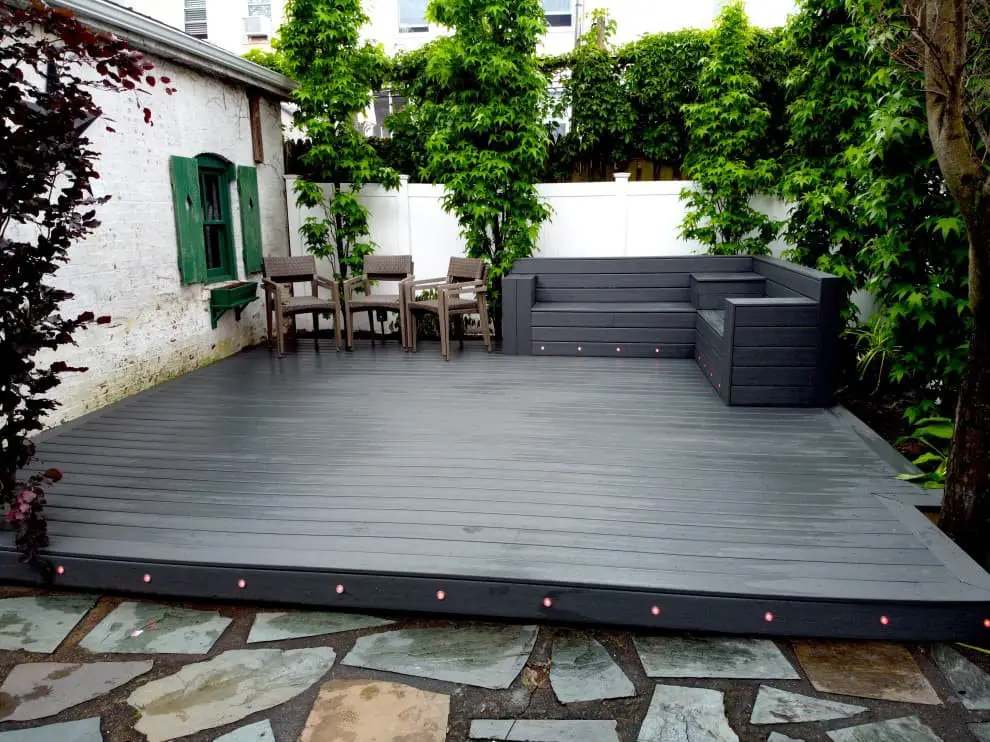
When it comes to creating a modern and striking look for your deck, a charcoal-toned option is hard to beat. The combination of this darker wood tone with crisp white trim and clean lines creates a visually appealing aesthetic that’s both contemporary and timeless. One of the key benefits of using a charcoal-toned deck is that it allows you to maintain the natural grain pattern of the hardwood while also adding visual interest through subtle contrasts.
This can be particularly effective when paired with lighter-colored homes, as the deep grays provide a striking contrast without feeling overwhelming or too dramatic. Overall, this color option offers a great balance between sophistication and subtlety.
Deck in Golden Herringbone
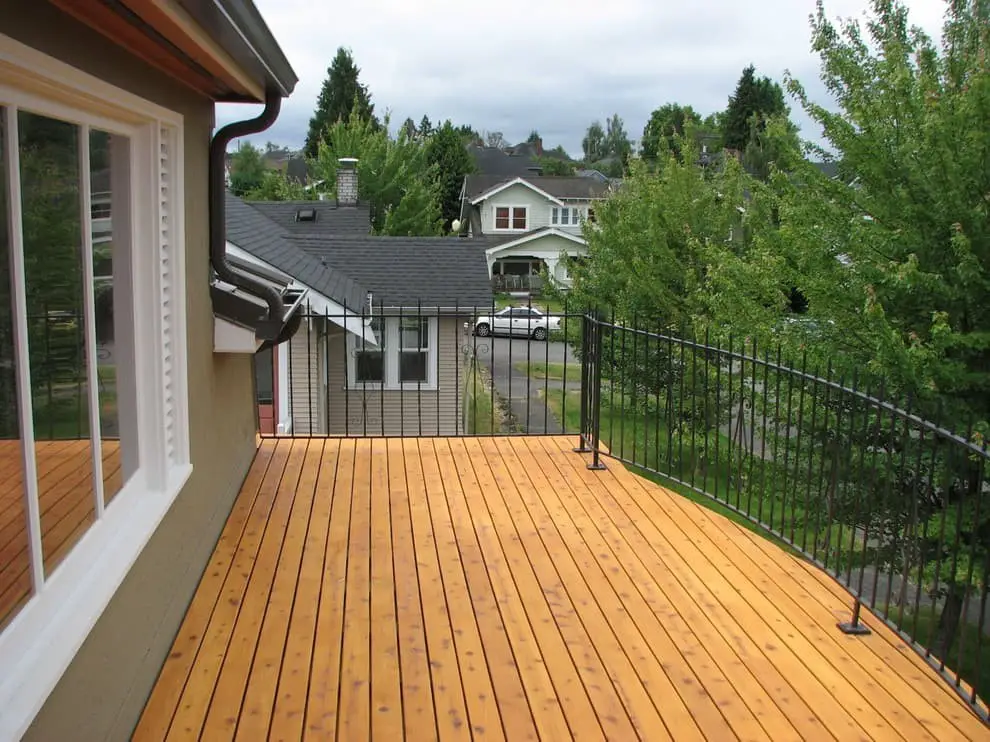
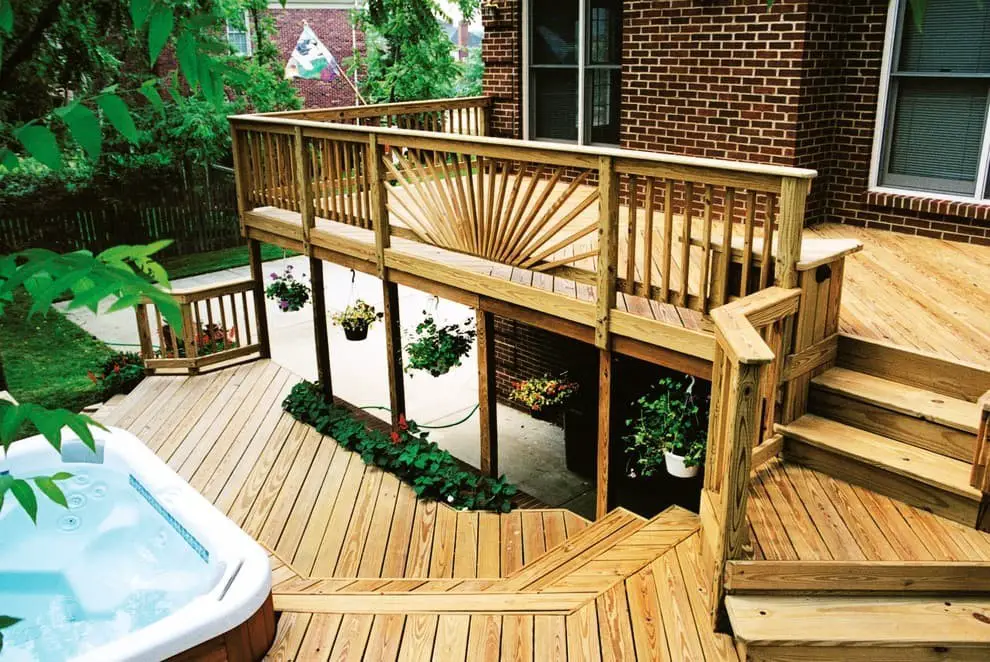
Opting for a golden-colored deck can bring a timeless essence to your outdoor space, particularly if you’re aiming for a classic or transitional design. The oak-like hue not only evokes a sense of nostalgia but also creates a seamless transition between indoor and outdoor areas, making it perfect for properties with oak flooring. By merging the two, you can expand your living area and create a cohesive look.
Some of the levels feature a herringbone pattern that adds visual interest and imbues the design with a touch of history. Additionally, this unique pattern creates a sense of depth and texture, making it an attractive option for those looking to add some personality to their outdoor space. The versatility of the golden color also makes it easy to pair with other home colors.
Cooler shades such as mid- to softer greens and blues complement the hue nicely, allowing you to create a harmonious and inviting atmosphere.
Deck in Light Greige Contemporary Style
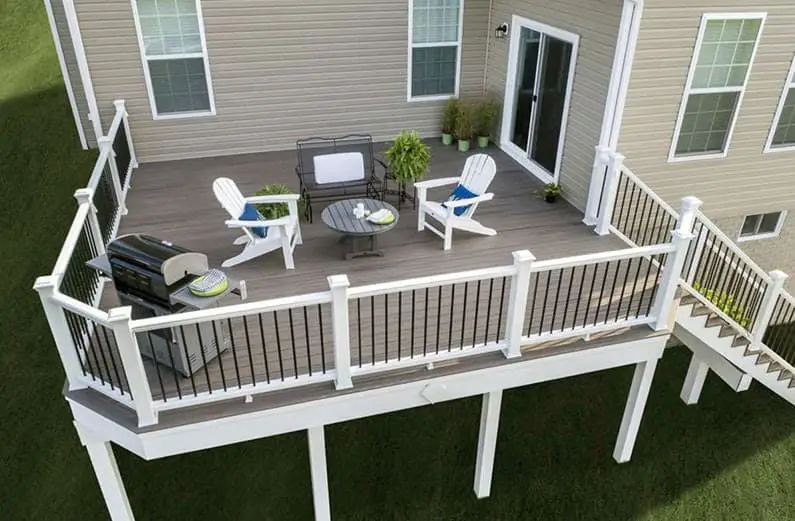
While greige might seem like a challenging color to pair with others due to its subtle blend of warmth and neutrality, it actually offers a surprising amount of versatility. The gray undertones in particular allow it to harmonize effectively with cooler hues, while the slight warmth ensures it doesn’t clash with brighter colors.
When it comes to patios, greige is an excellent choice for those who prefer lighter shades but are unsure how to match them with their home’s color palette – it’s essentially a foolproof option. Furthermore, greige complements most brick hues, except for yellow, which can be attributed to the similar tone intensity but distinct tint. This makes it a dependable choice for homeowners seeking a cohesive look.
Multi-Level Deck in Two Tone
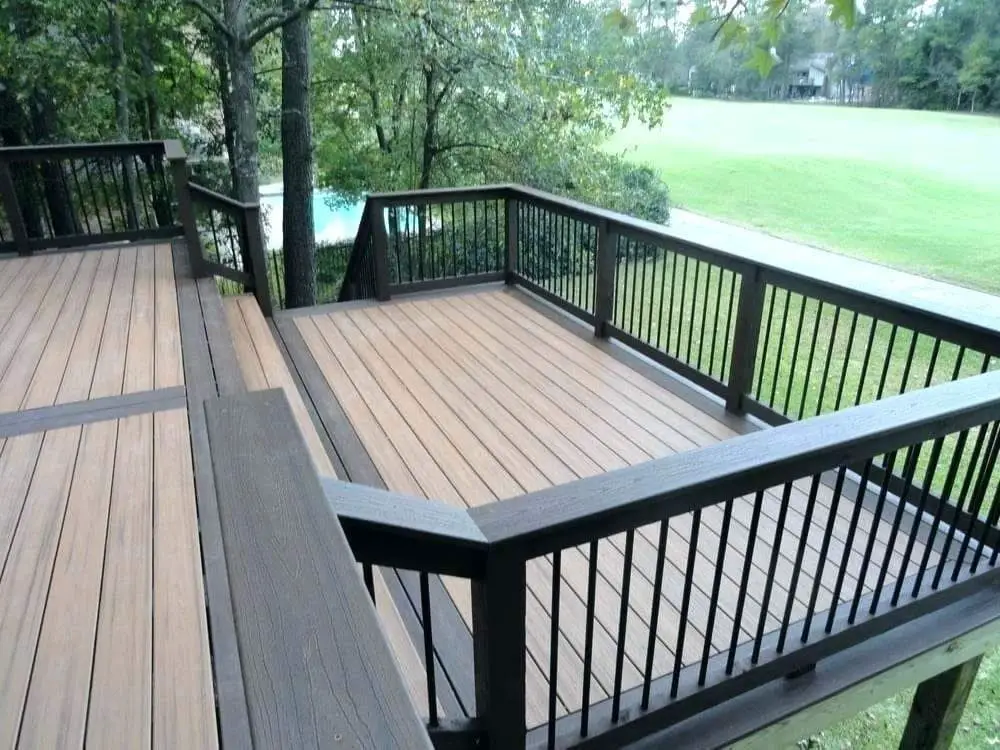
When designing a conventional deck, consider combining two shades of brown – one with a softer, crimson undertone and the other with a deeper, more neutral tone. This approach not only adds visual interest but also enhances safety by clearly outlining each level and emphasizing the steps. The uniformity of the surface colors works in your favor, allowing each hue to stand out without overpowering the overall aesthetic, creating a dramatic yet harmonious look.
Deck with Gray Stain
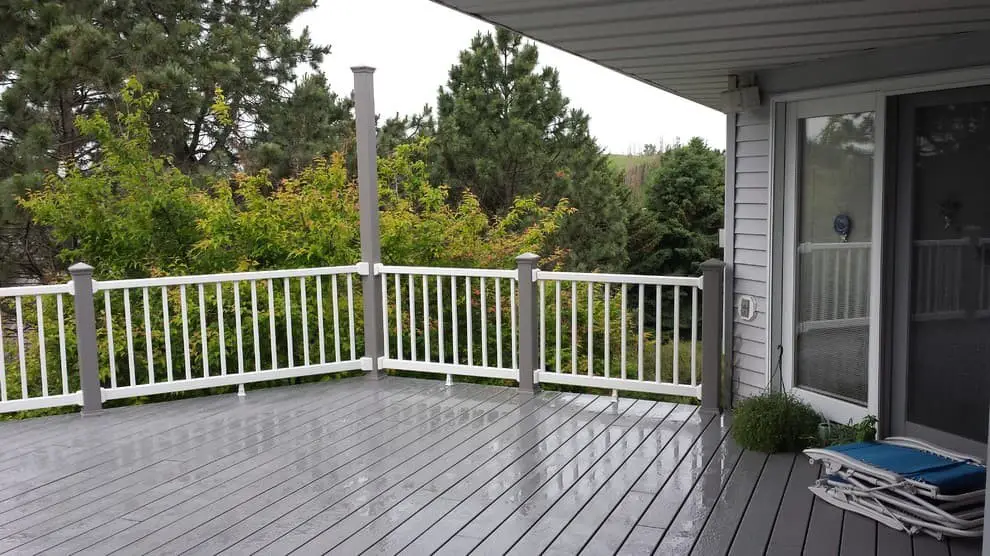
One of the most appealing aspects of this decking material is its ability to mimic the appearance of driftwood, which can add a charming beachy vibe to coastal homes. The gray stain’s light-reflecting properties also make it an excellent choice for areas that receive plenty of sunlight. When paired with modern home architecture, the gray hue lends a contemporary feel, particularly when the boards are arranged in a straight and sleek manner.
In addition to its natural beauty, this decking material is highly versatile and can be easily integrated into various exterior color schemes. For instance, it pairs well with darker exterior colors like blue, charcoal, or ebony, creating a striking contrast that adds depth to the overall aesthetic. Alternatively, you can also use brighter colors like coral or turquoise, as this decking’s balanced design allows it to harmonize with a wide range of hues.
Deck: Bluish Gray Flat
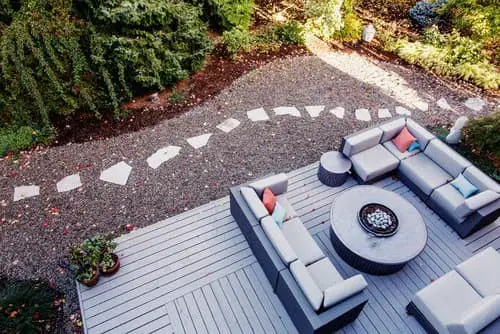
For those who crave a neutral yet striking exterior color, this blue-gray hue could be an attractive alternative. While it may require more maintenance than a base coat due to potential scuff marks and cracks on painted surfaces, the matte finish offers versatility in terms of aesthetic appeal. This color can evoke modern, rustic, or industrial vibes depending on furniture combinations, making it an ideal choice for those willing to invest time in upkeep.
However, homeowners concerned about minor imperfections may want to explore other options.
Deck made of natural mahogany
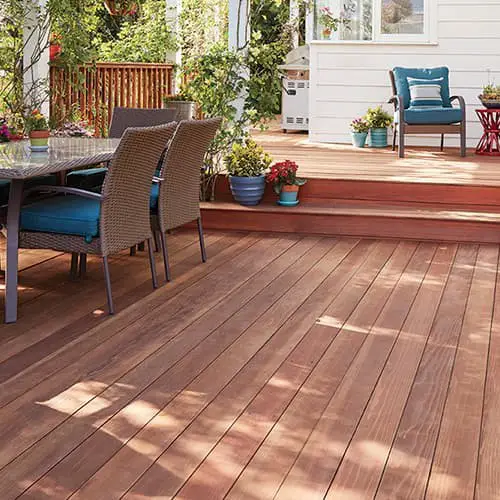
Rather than hiding the natural beauty of mahogany under layers of stain, consider embracing its inherent charm. The mid-toned hue offers a versatility that makes it suitable for pairing with both light and cool home paint colors. With overtones of honey and gold, it can complement a range of shades. While it may not be the best match for warm exterior paint colors like red brick or lemon, it could create a stunning contrast with blue or white hues.
Almost Black Deck
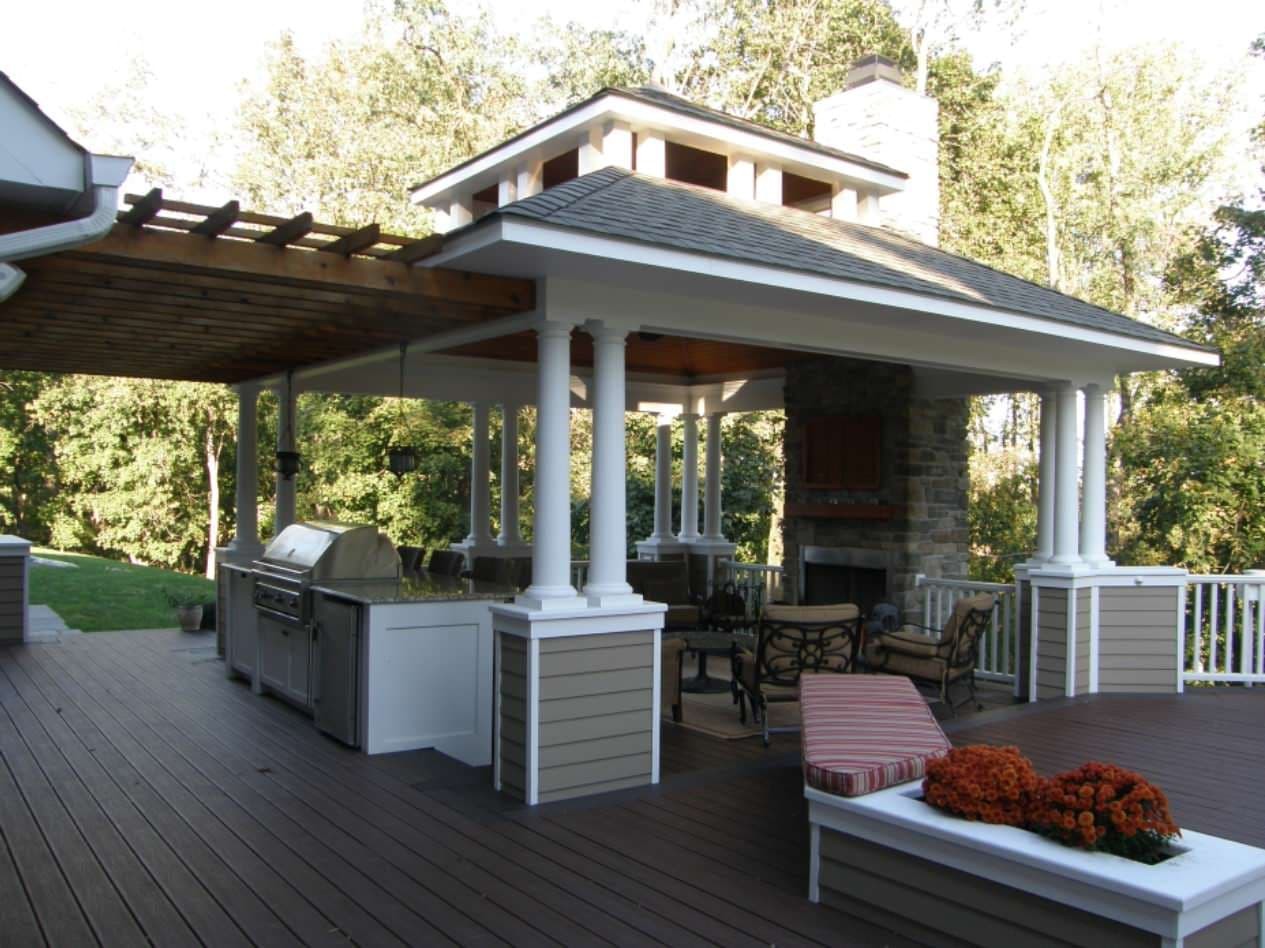
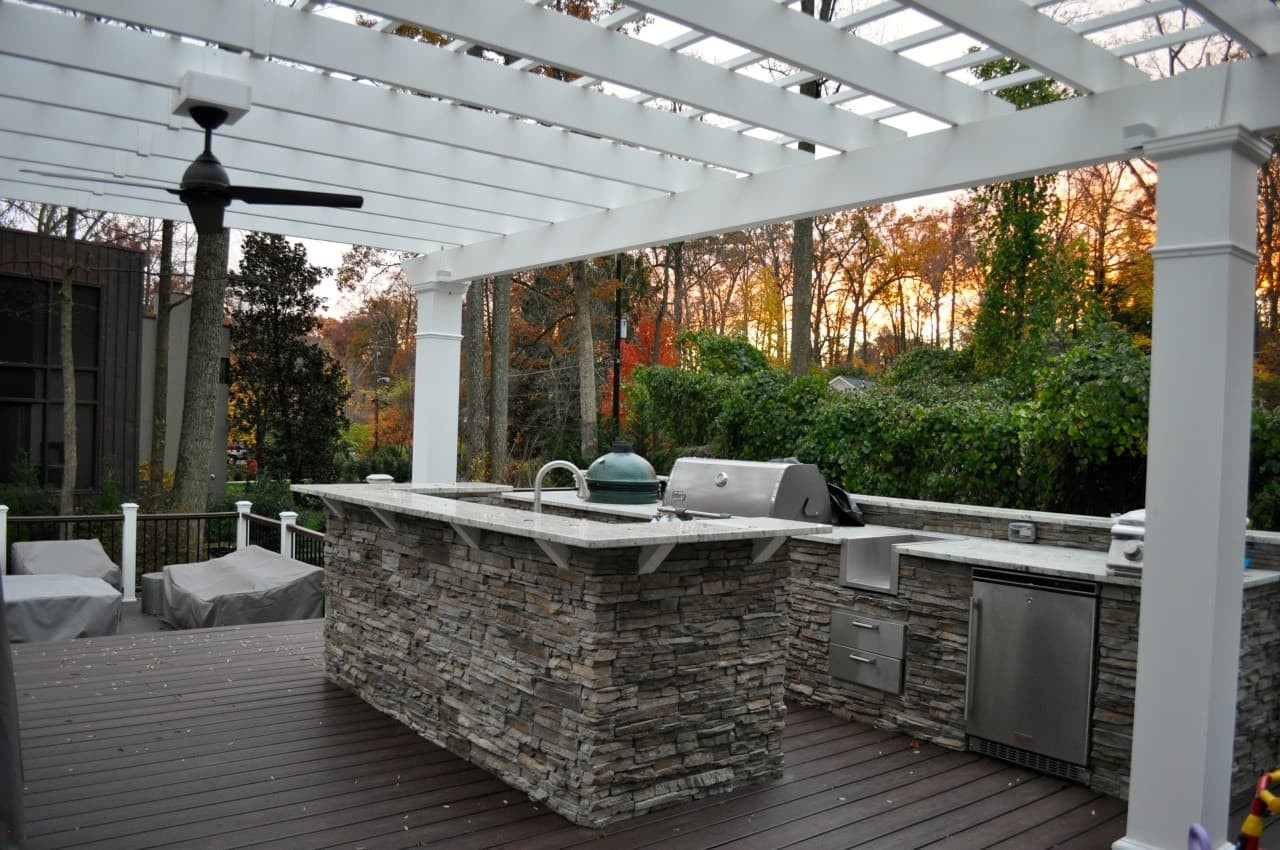
For a deck that makes a striking contrast against a white house, consider a practically black design. While the color may be technically classified as a very dark brown with a neutral, almost cold tone, its effect is undeniably dramatic. The addition of a white pergola and columns creates a visually appealing combination that deepens the overall appearance of the deck.
This style is versatile enough to complement lighter-colored houses in general, but it’s essential to keep in mind that it might not be the best fit for darker home colors.
Boards with a Honey Color
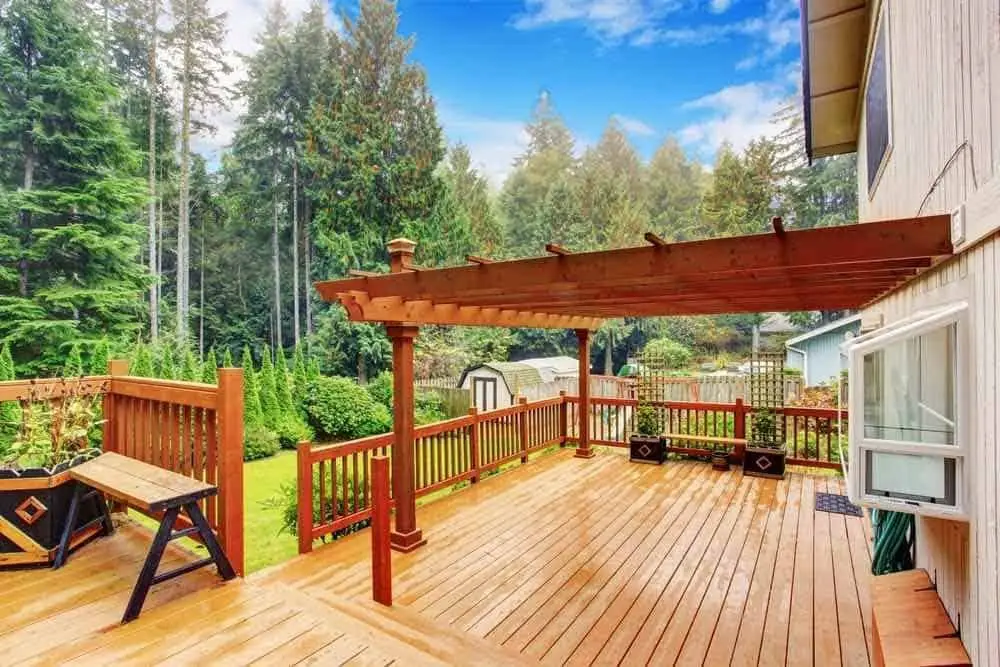
While honey-hued semi-decks may not overwhelm with bold red tones, they still exude comfort. This warm color palette harmonizes seamlessly with natural surroundings and neutral hues alike, making it an excellent choice for a white house’s deck. The clean lines of the boards are offset by gray planters, lending a contemporary air to the space. Yet, this same design would be equally at ease in rustic or modern outdoor settings, its versatility allowing it to blend seamlessly with any aesthetic.
Grey
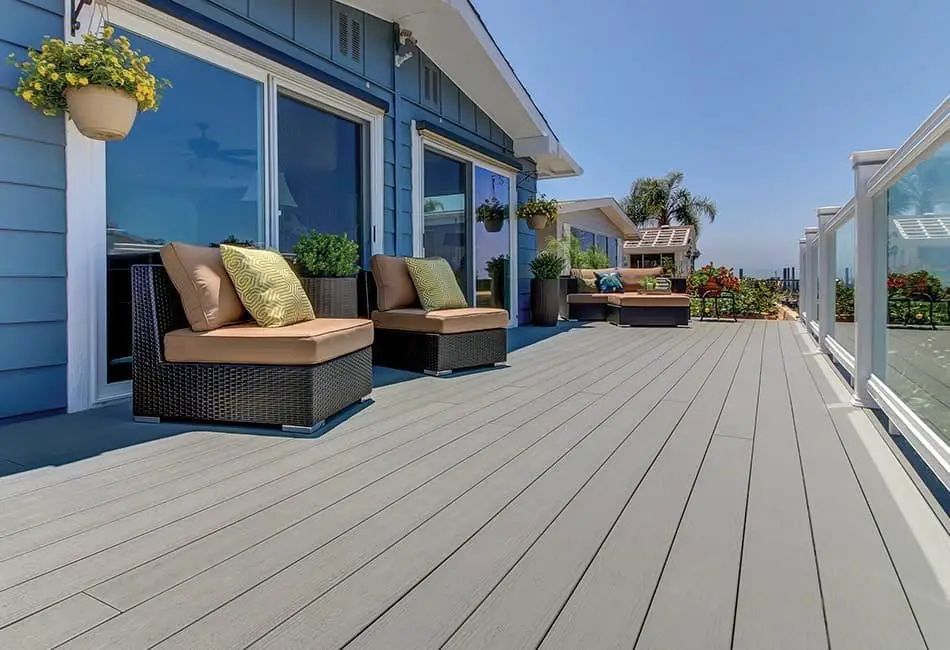
After years of being considered dull and unexciting, grey has made a comeback as the go-to neutral color for homes. When it comes to wood decks, grey deck stains or paint can be used to add personality to this often overlooked outdoor space. One of the benefits of grey is its versatility – it’s available in a wide range of hues that span from soft marble tones to darker charcoal shades.
As a bridge between these opposing colors, grey works well with both white and neutral homes featuring dark trim, creating a harmonious balance that can’t be beat.
Slate
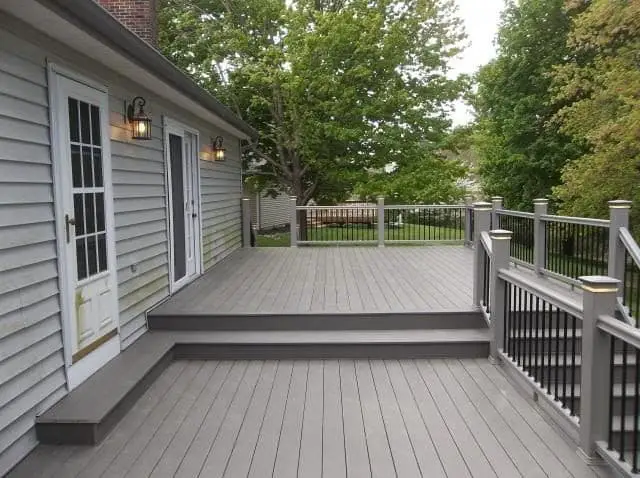
Slate’s dark, cool tone makes it an attractive option for deck floors. The popular grey hue is also often used to stain wood and color concrete. However, genuine slate can be slippery when wet, which may limit its use as a decking material. As a result, many people who love this shade of grey opt for tinted or painted concrete surfaces instead.
Stain
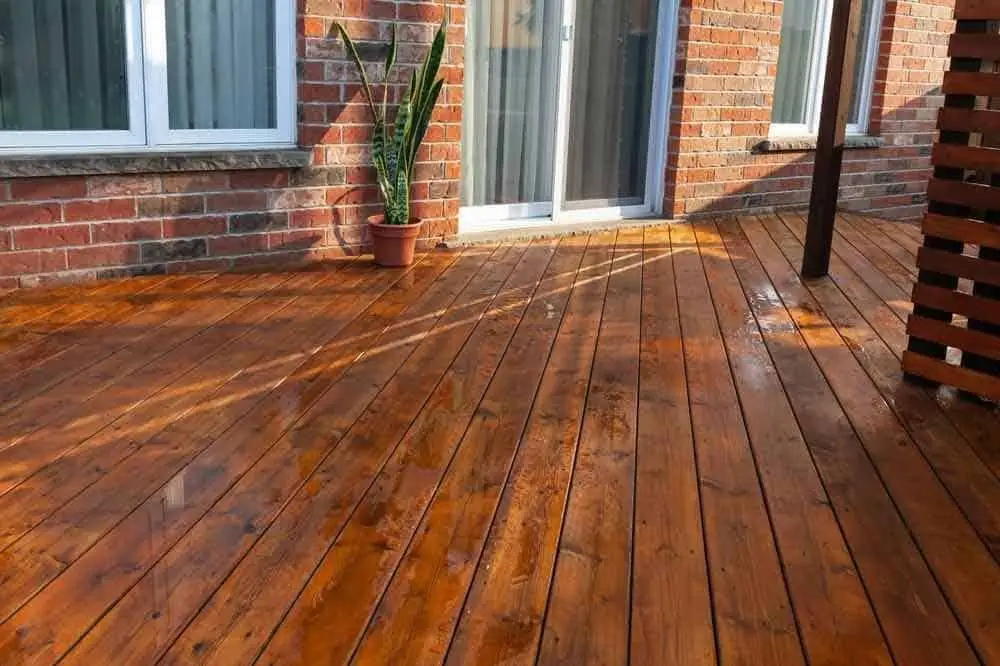
When applying deck stain, homeowners gain more than just a desired color – they also ensure their decking is protected from the elements. The type of stain chosen plays a crucial role in determining how much of the natural beauty of the wood remains visible.
Stain that is solid
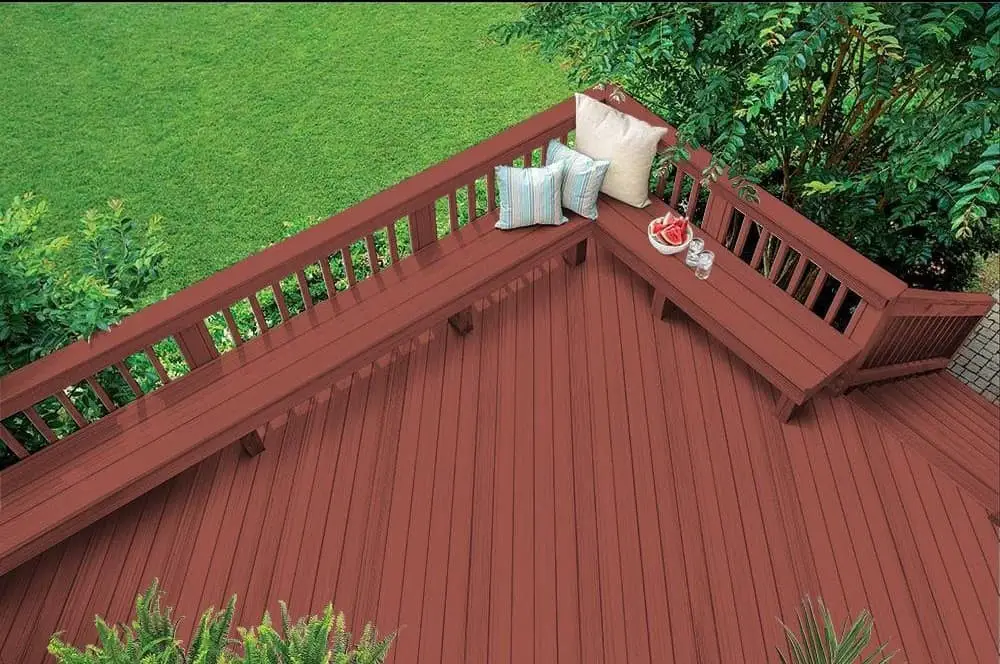
Solid deck stain plays a crucial role in defining the grain and color of the wood. In fact, it accounts for the majority of the overall visual aesthetic. When aiming for a rich, consistent dark hue on your deck, opting for solid deck stain is the ideal choice.
Stain that is semi-transparent
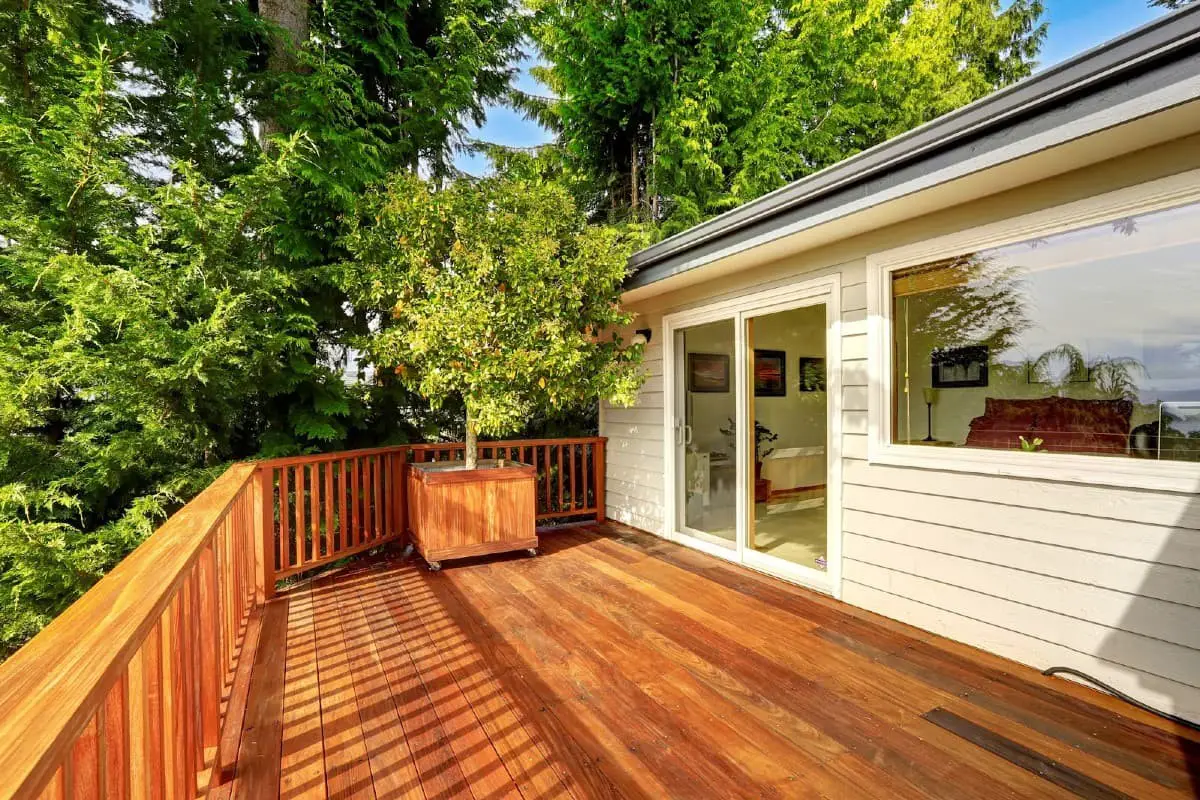
When selecting decking materials, it’s essential to balance the natural beauty of the wood with the need for protection against the elements. A high-quality wood sealant can help achieve this balance, allowing the wood’s inherent qualities to shine through while also providing reliable UV protection and weatherproofing. By incorporating a top-notch wood sealant into your deck plans, you’ll be able to enjoy the beauty of your outdoor space for years to come.
Clear wood preserves
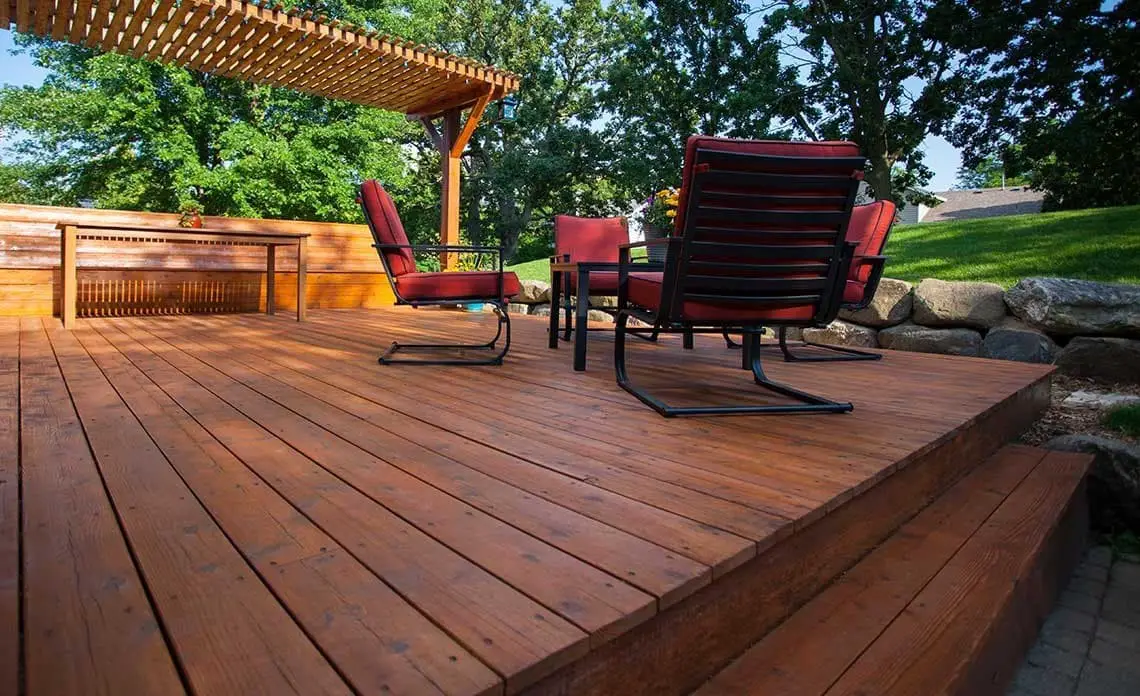
For a stunning finish, consider using a clear stain treatment for your wooden deck makeover. This transparent option not only provides UV protection and weatherproofing but also allows the natural beauty of redwood, cedar, or any other gorgeous wood to take center stage on your pool deck, patio, or porch. Whether you’re looking to enhance the rustic charm of your outdoor space or create a sleek and modern look, a clear stain treatment is an excellent choice.
Tan
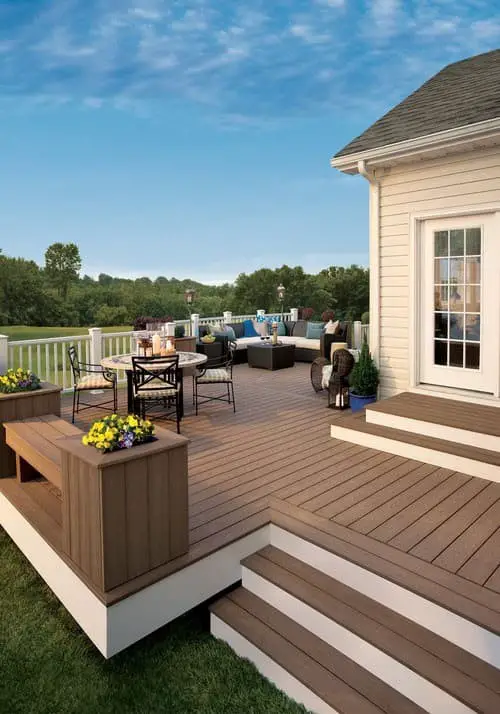
When it comes to selecting a deck stain color, one popular option is tan. This versatile hue can be found in a range of shades, from light and cool khaki tones to rich maple and honey hues. One of the reasons tan is a favorite among homeowners is that it tends to complement almost any outer color theme, making it a great choice for decks of all styles.
One of the benefits of using a tan deck stain is that it allows the natural beauty of the wood to shine through.
Since many types of wood naturally fall into the tan range, this color can help bring out the best in your decking material. Additionally, browns and tans are also great options for desert settings, as their earthy tones blend seamlessly with the surrounding environment.
Tone on Tone
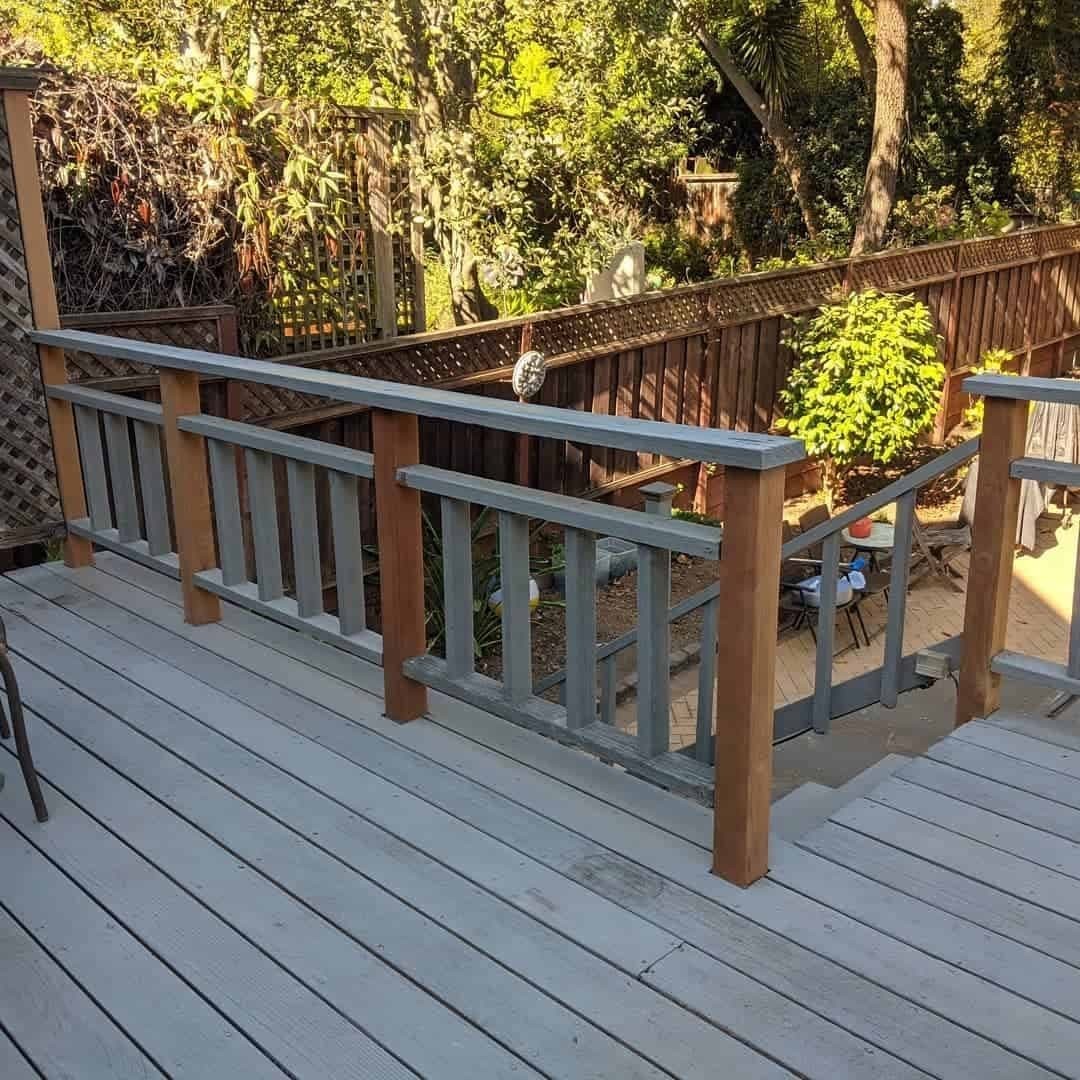
When it comes to designing your dream deck, the possibilities for incorporating multiple colors are endless. One popular approach is to combine rich, warm tones like brown wood slats with sleeker, darker accents like shiny black columns and handrails. Alternatively, you can create visual interest by pairing crisp white posts and guardrails with dark decks or step surfaces.
For a truly unique look, consider incorporating three or more colors into your design, such as the combination of black, maple, and grey found in some deck designs.
White
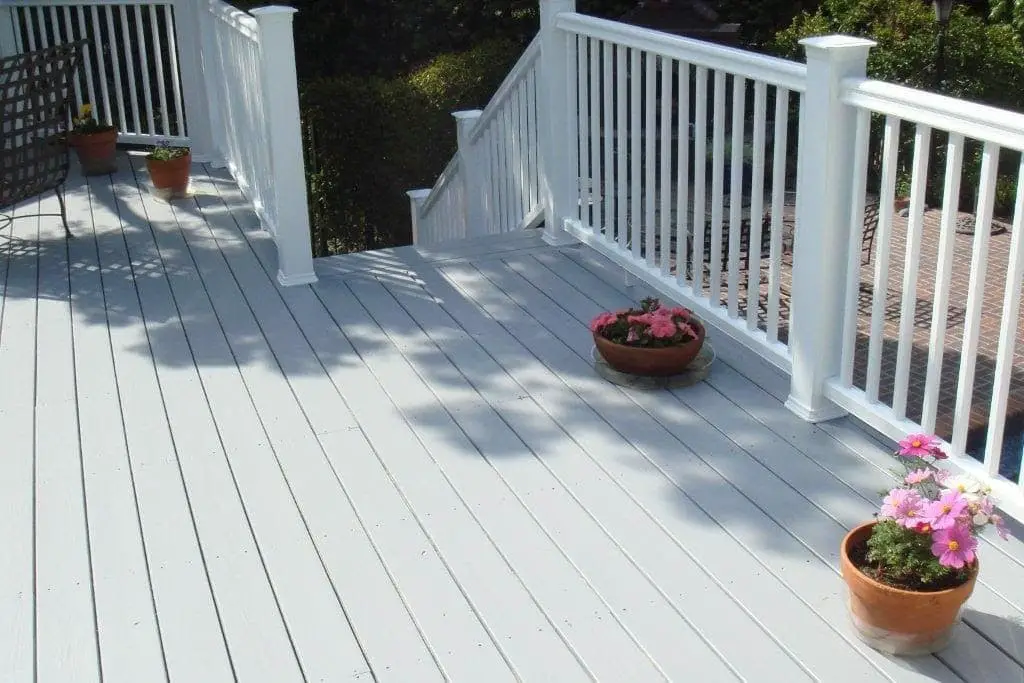
While an all-white exterior may present maintenance challenges, it can be a shrewd choice in certain circumstances. For instance, a white decking, railings, and trim combination is a popular choice for coastal homes and Victorian-style porches, where the crisp color scheme complements the surroundings.
Additionally, in warmer climates, a white deck proves beneficial as it reflects rather than absorbs the intense heat from the midday sun, making it a practical option for those seeking to mitigate the effects of the scorching sun.
Wood
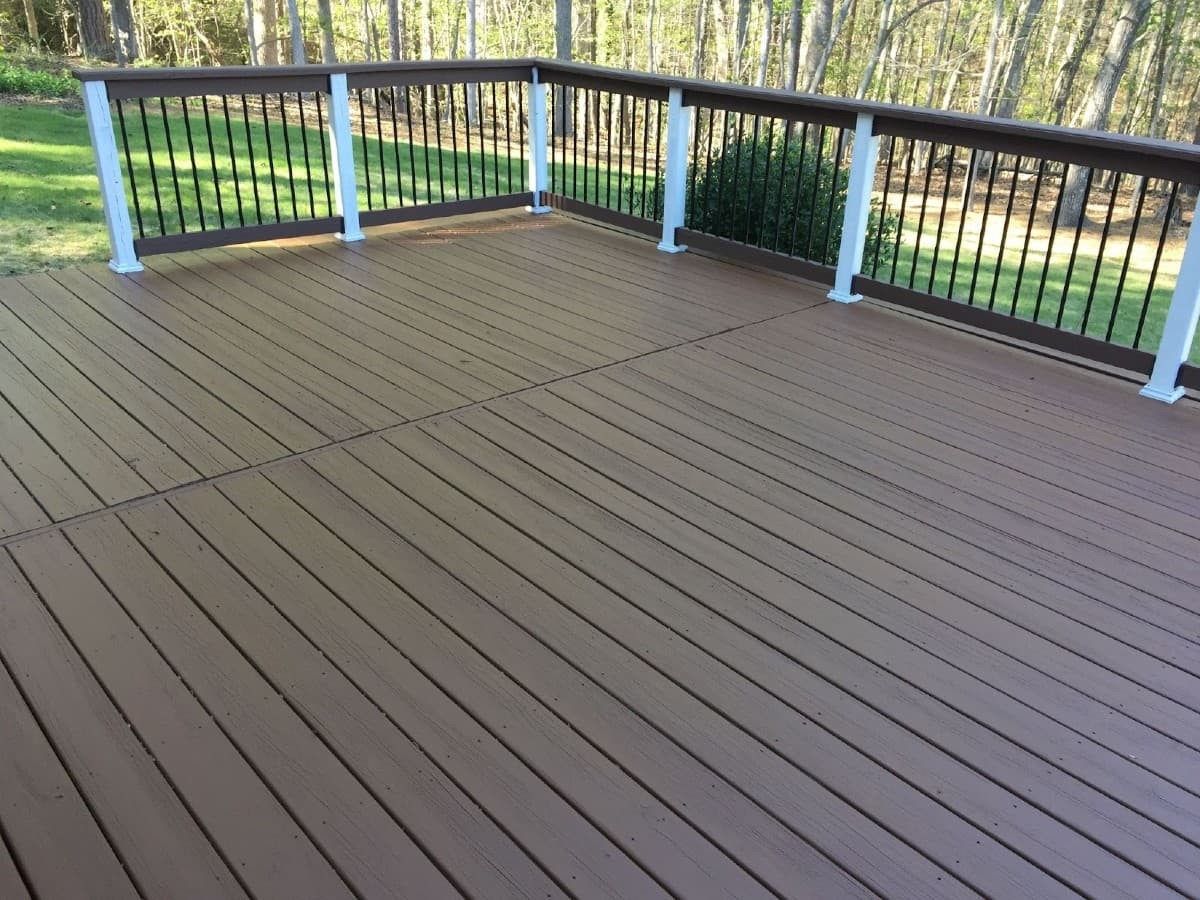
Blending your outdoor living space seamlessly into its surroundings is easily achievable by incorporating natural wood dressings into your patio or deck design. While the unadulterated beauty of raw wood can be captivating, it’s essential to apply a stain or finish to ensure weather resistance. In addition to providing protection from the elements, semi-transparent coatings offer a fantastic opportunity to introduce a splash of color without obscuring the natural grain and texture of the wood.
Colors that are fresh and light
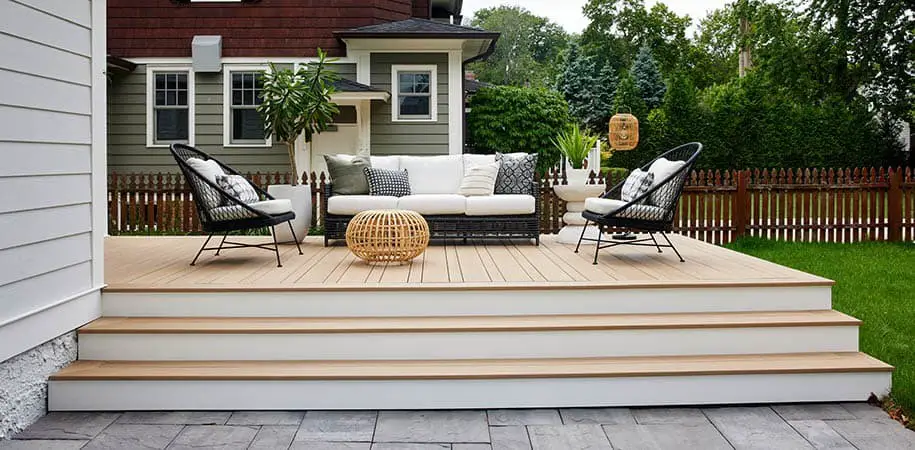
Coastal-style homes are characterized by their light color palette, which is a nod to their origins near the ocean. Grays, tans, whites, and blues dominate the aesthetic, evoking the soothing tones of the seashore. In terms of decking, composite options in these same hues – think tan and light gray – create a seamless transition between indoor and outdoor spaces.
Hues that are dark and textured
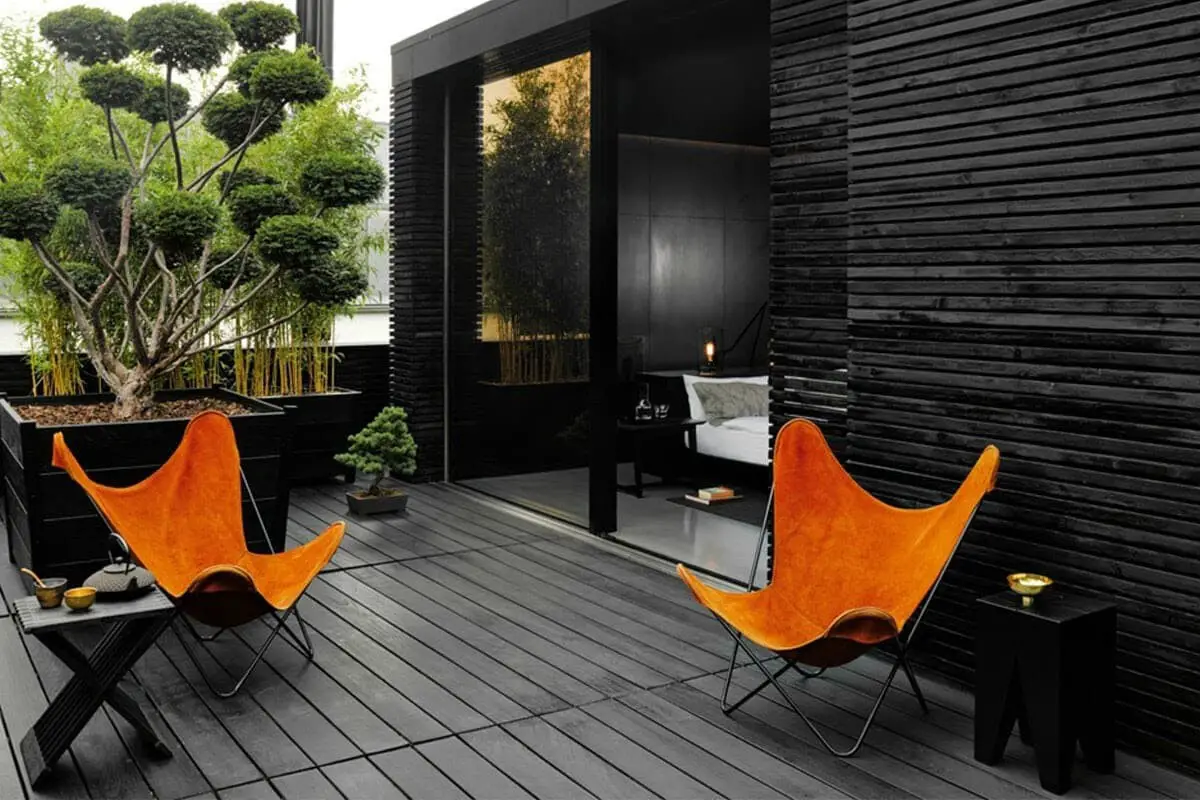
To achieve a distinctive dimensional look, mid-century contemporary homes often feature geometric silhouettes and a medley of textures, including metallic sheens, natural stone, and wood accents. For a rustic, wooden aesthetic in your design, consider dark, embossed composite decking that evokes the earthy tones of reclaimed timber.
Tones with a lot of personality
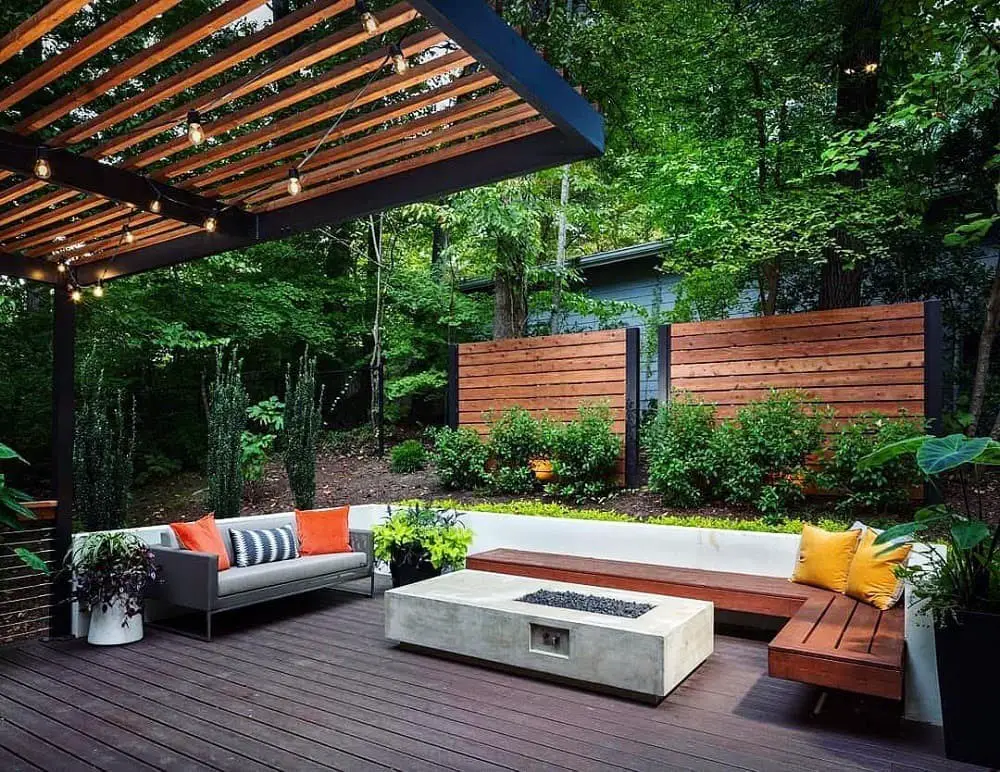
In the artisanal approach to home design, originality and a handmade touch take center stage. While the palettes for these homes’ decks may vary in terms of shade and hue, they often lean towards cooler tones that evoke a sense of serenity and calmness. To perfectly complement the handcrafted essence of these one-of-a-kind residences, consider selecting a moderate gray composite deck color with subtle variations that add character and visual interest.
Rustic
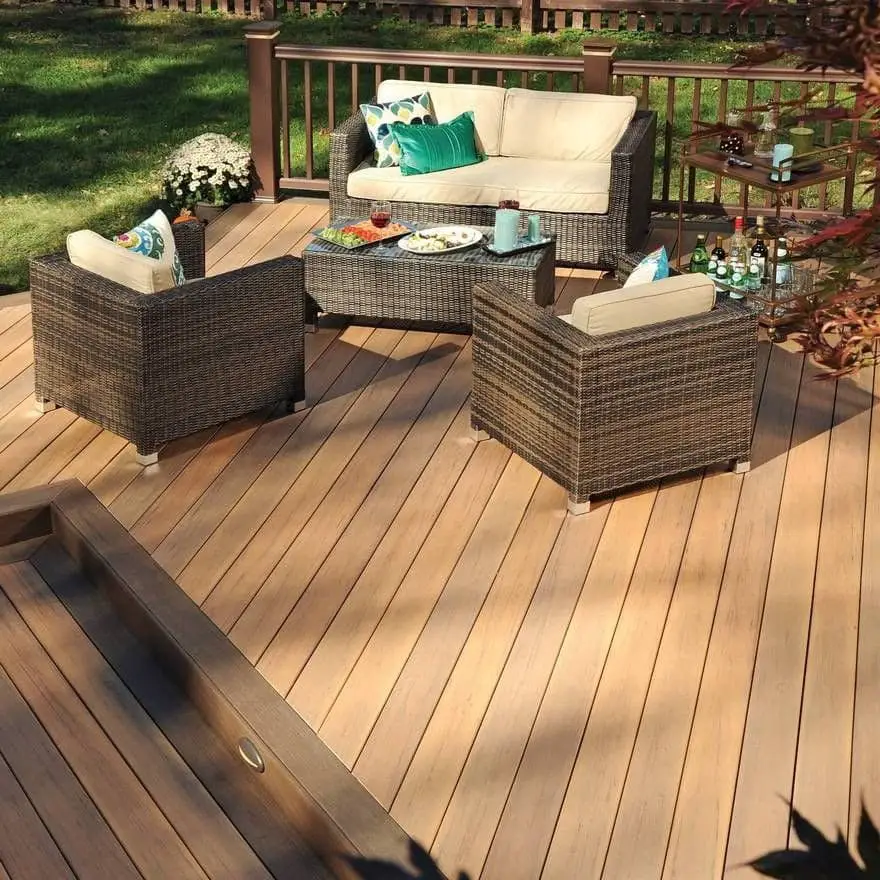
When it comes to selecting a house color that sets your home apart from others, green siding is an unexpected yet charming option. Its unique deck color palette pairs beautifully with rustic pale pecan-colored natural wood planks, creating a harmonious and visually appealing combination that complements both modern and classic property styles.
Redwood
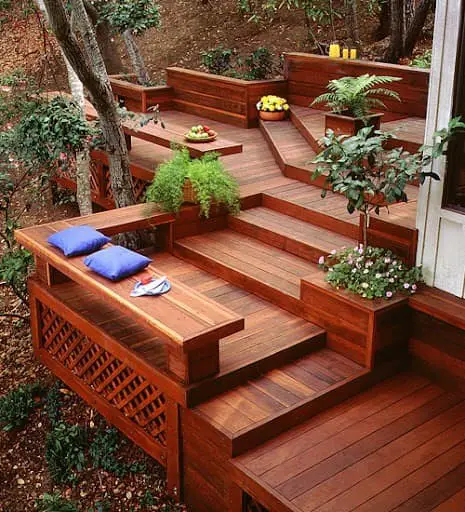
White houses offer a versatile backdrop for any exterior design, effortlessly complementing a wide range of hues. This neutrality allows the colors it’s paired with to truly shine. For instance, a bold deck color combination could feature warm redwood tones, while a richer coffee-inspired shade like chocolate would provide a more traditional contrast.
FAQs
How long will a painted deck last?
A well-executed paint job can prove incredibly durable, with some lasting up to ten years when done correctly. One of the significant advantages of using paint over stain is its ability to offer a broader spectrum of color options. Unlike stain, which tends to be limited to earthy tones such as brown, paint allows for an array of colors to elevate the appearance of your deck.
Furthermore, paint excels at concealing imperfections on worn or aged decks by filling in gaps and fractures, providing a smoother finish that can greatly enhance the overall aesthetic.
Should your deck be the same color as your house?
When selecting a color scheme for your deck, it’s essential to consider the overall aesthetic of your home’s exterior. This means harmonizing the hues with those already present on your house’s facade. You can opt to match one of the colors used elsewhere on the exterior, or alternatively, choose an accent color that complements your home’s design and adds visual interest.
By doing so, you’ll create a seamless transition between your deck and the rest of your home, resulting in a cohesive and inviting outdoor space.
What color should I paint my deck?
Green, a versatile and popular interior paint color, also translates beautifully as an exterior deck color. Its timeless appeal makes it suitable for both classic and contemporary homes alike. What’s more, this calming hue can be paired with a wide range of complementary colors, including fiery reds, deep blacks, and earthy taupe tones. The green spectrum itself spans from the darkest forest greens to the lightest sage shades.
What is the most popular stain for a deck?
When it comes to deck colors, cedar is a timeless favorite that seamlessly blends into any outdoor space. Its versatility allows it to harmonize effortlessly with the surroundings, making it an excellent choice for decking and gardening enthusiasts alike. A clever approach to selecting a color palette would be to begin with the dominant hue in your yard and work your way outwards. However, cedar is so well-suited that you can’t go wrong, regardless of the season.
Its soothing tone provides warmth during chilly winter nights, while its lighter undertones prevent it from becoming overwhelming on hot summer days.
Should I paint my deck black?
When seeking to make a striking visual impact or introduce dramatic contrast in your exterior design scheme, black is an exceptional deck color option. However, it’s crucial to exercise caution, as black isn’t as accommodating as grey. To effectively complement this bold hue, you’ll need to approach the design of your outdoor furnishings with deliberate consideration.
Conclusion
When choosing a deck color, homeowners often find themselves torn between modern and rustic options. Ultimately, the color of your house is the deciding factor in selecting the perfect shade for your deck. A harmonious match with the siding can create a seamless visual flow, making it seem as though the deck was always meant to be there. If you’re struggling to decide on the right color scheme, fear not!
Take inspiration from the current trends and select the one that best complements your property’s unique character.
Related Posts
When it comes to selecting equipment for your farm business, there are several key factors to consider. To begin with, you should think about the specific needs of your operation and what type of equipment will best serve those needs. This might include things like tractors, plows, or other machinery that can help streamline processes and increase productivity.
Additionally, you may want to consider factors such as budget, maintenance requirements, and overall durability when choosing equipment for your farm business. Furthermore, it’s essential to ensure the equipment you choose is compatible with the specific crops or livestock you’re working with. Ultimately, selecting the right equipment can be a crucial step in achieving success and efficiency on your farm.

